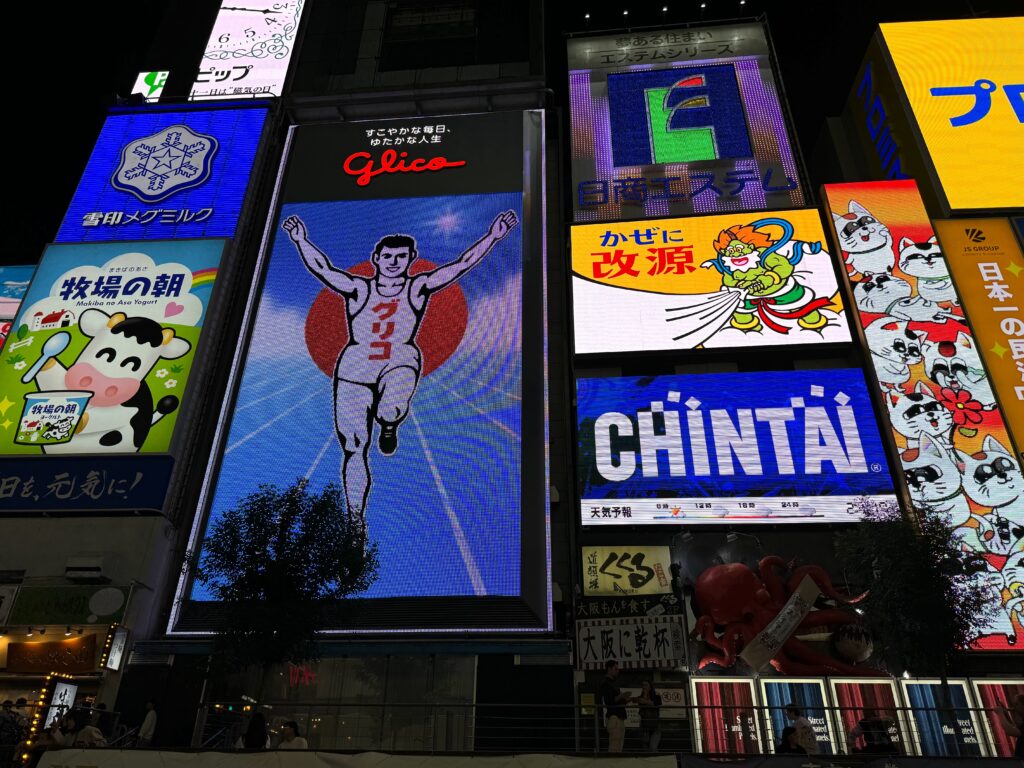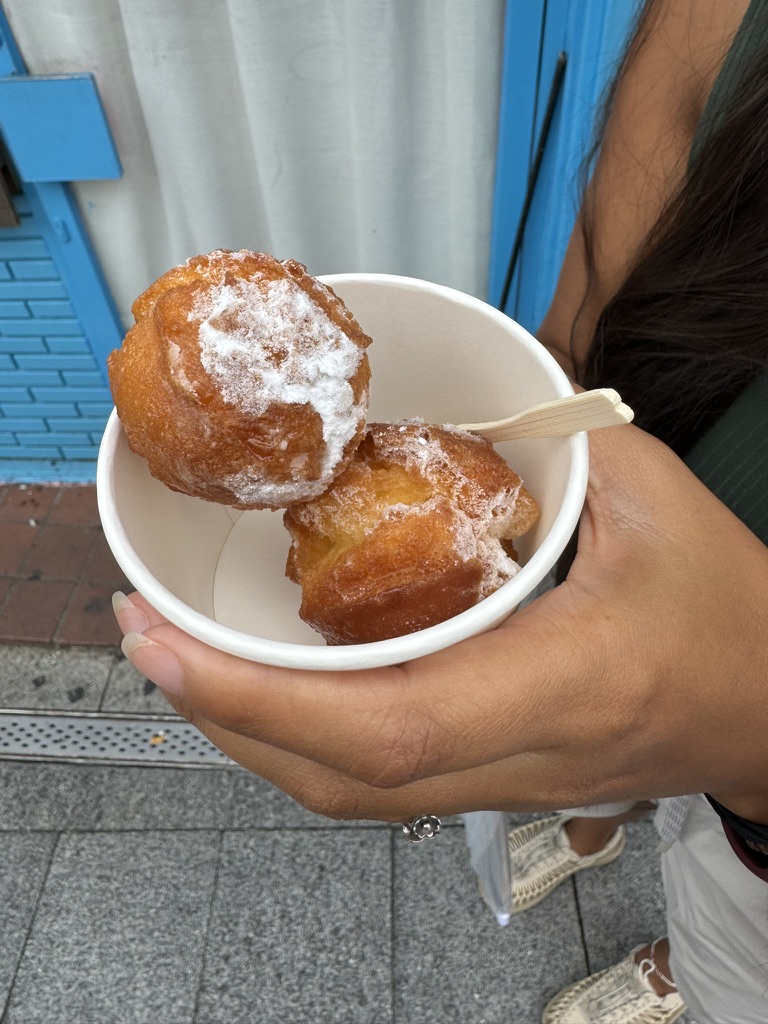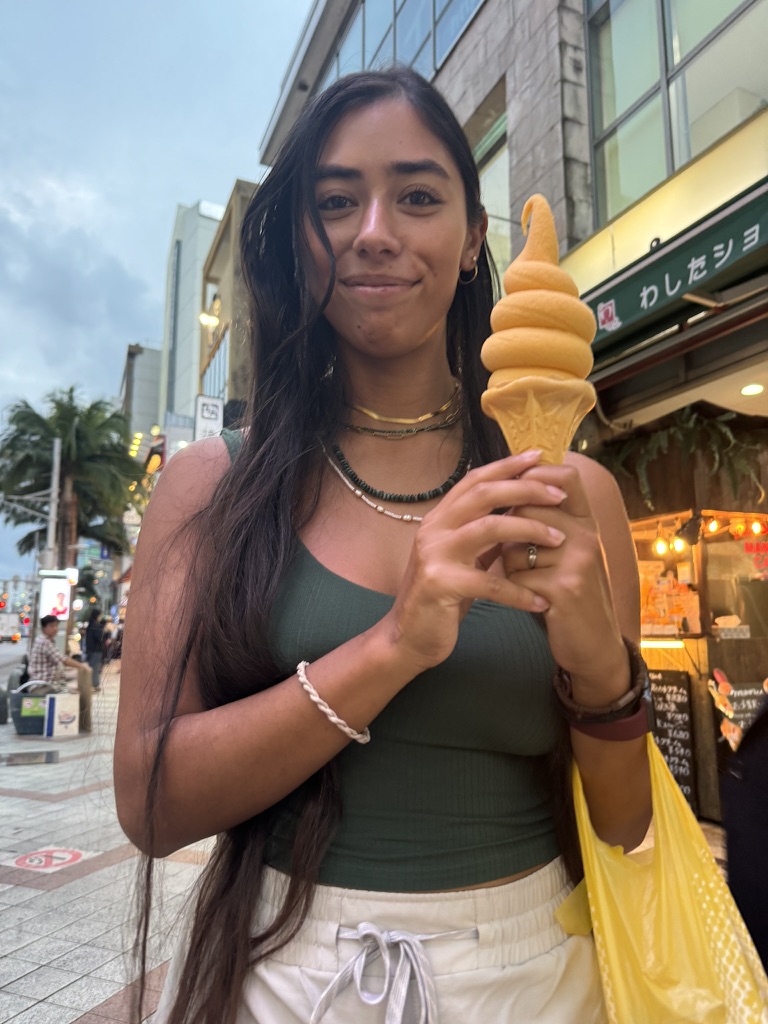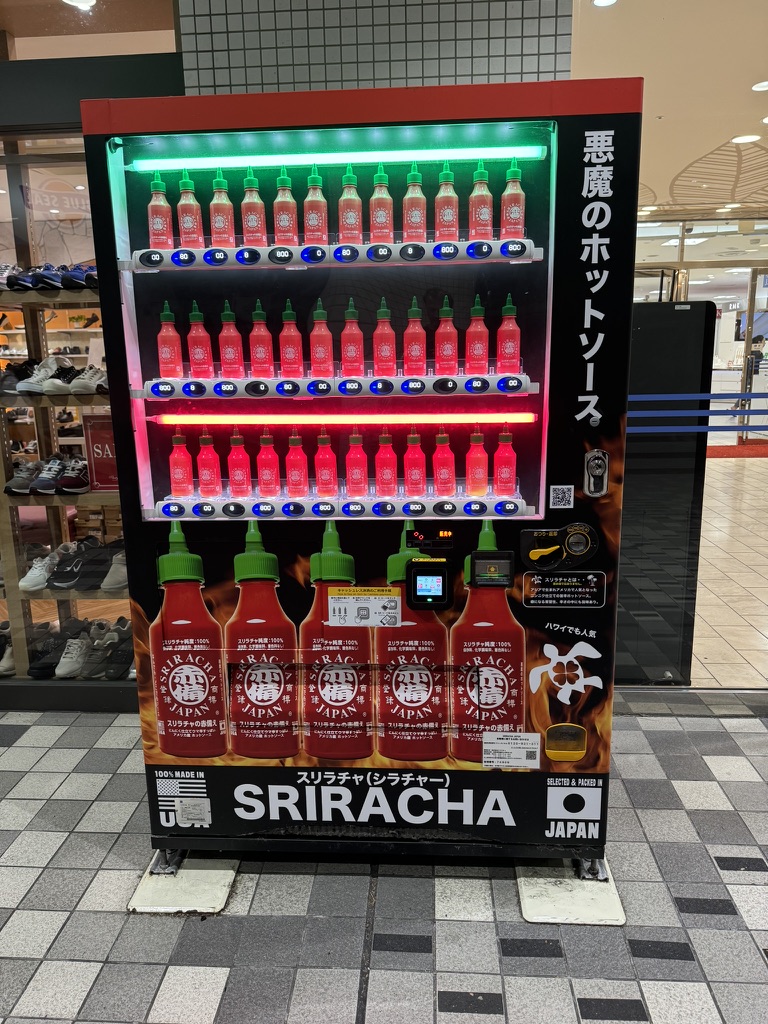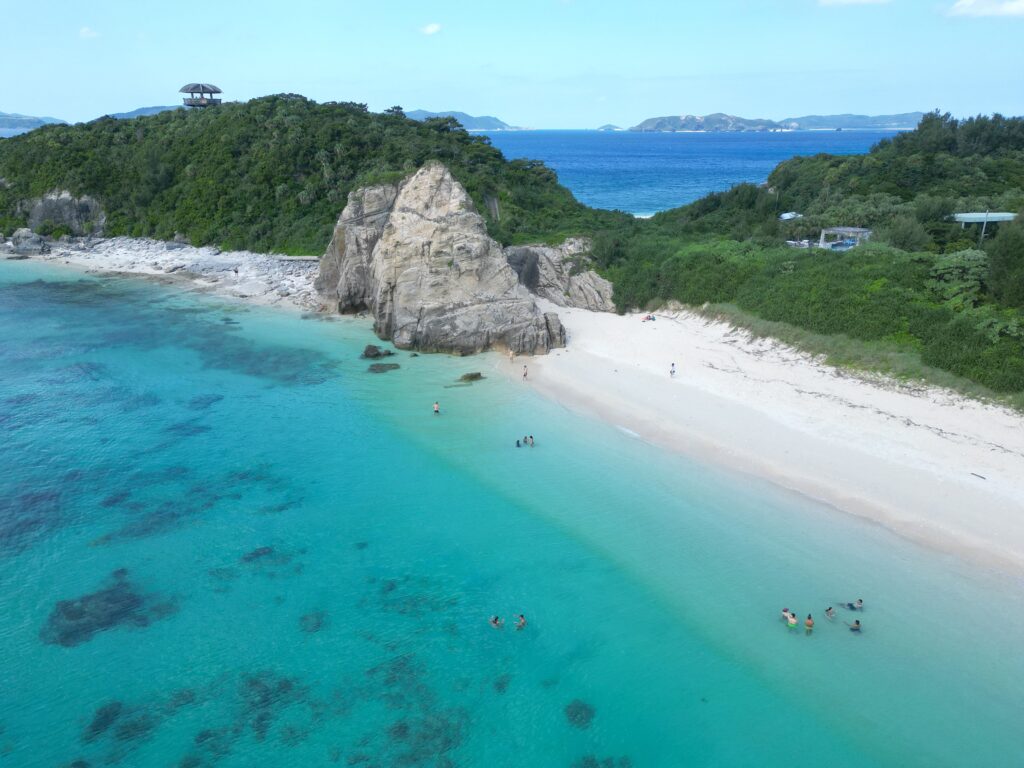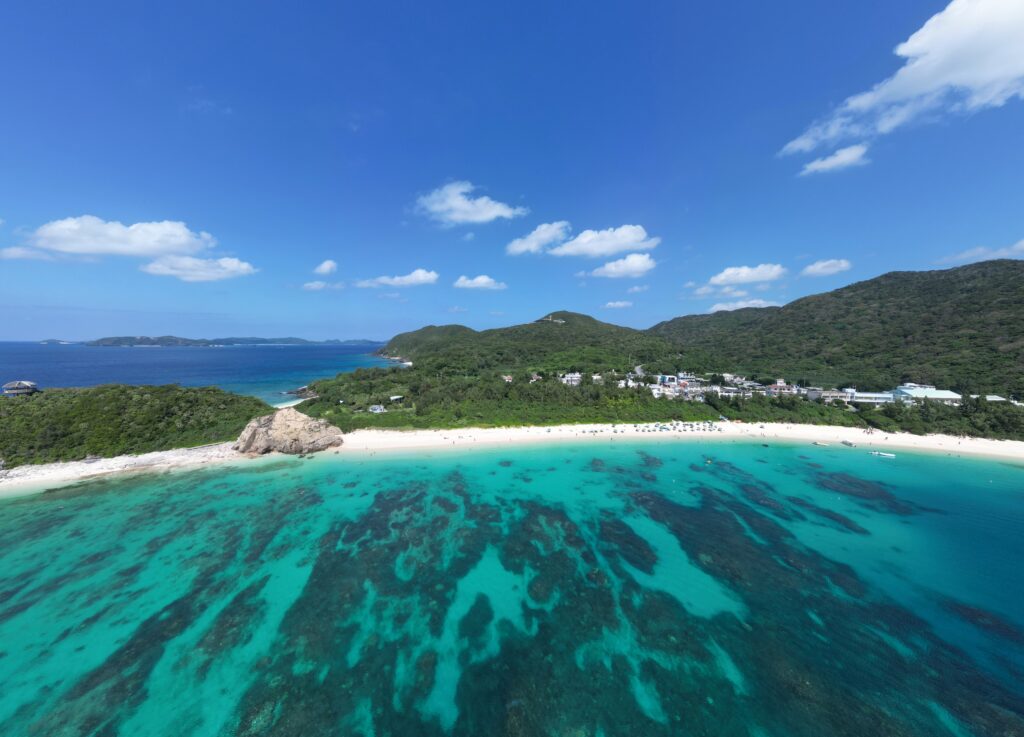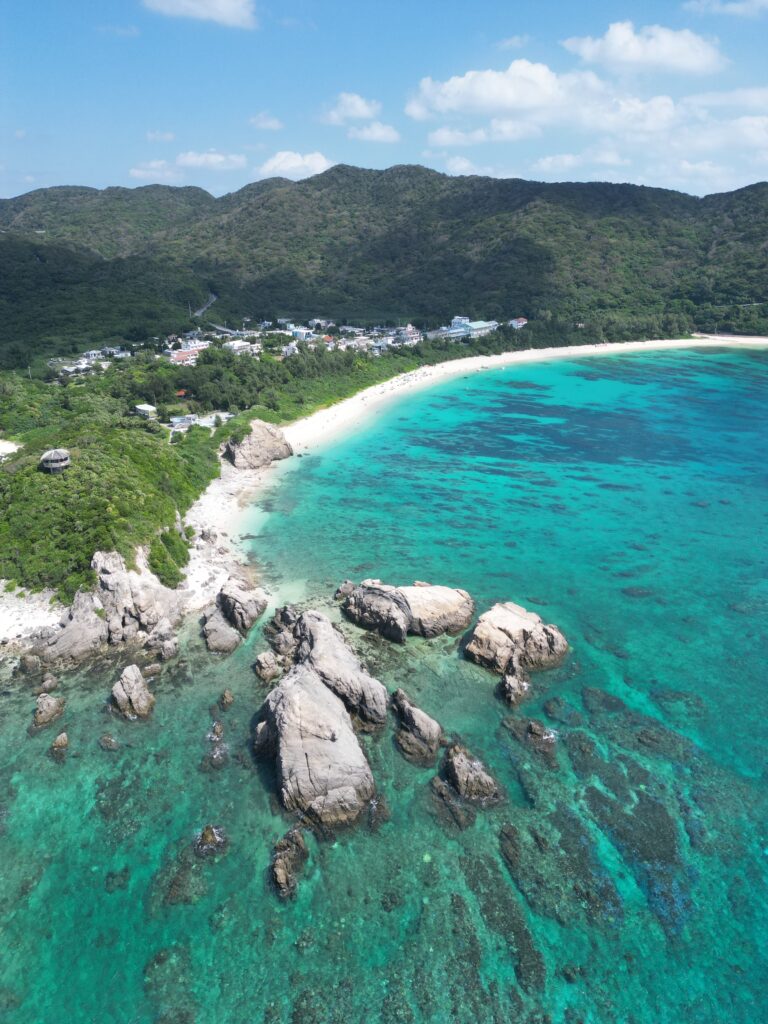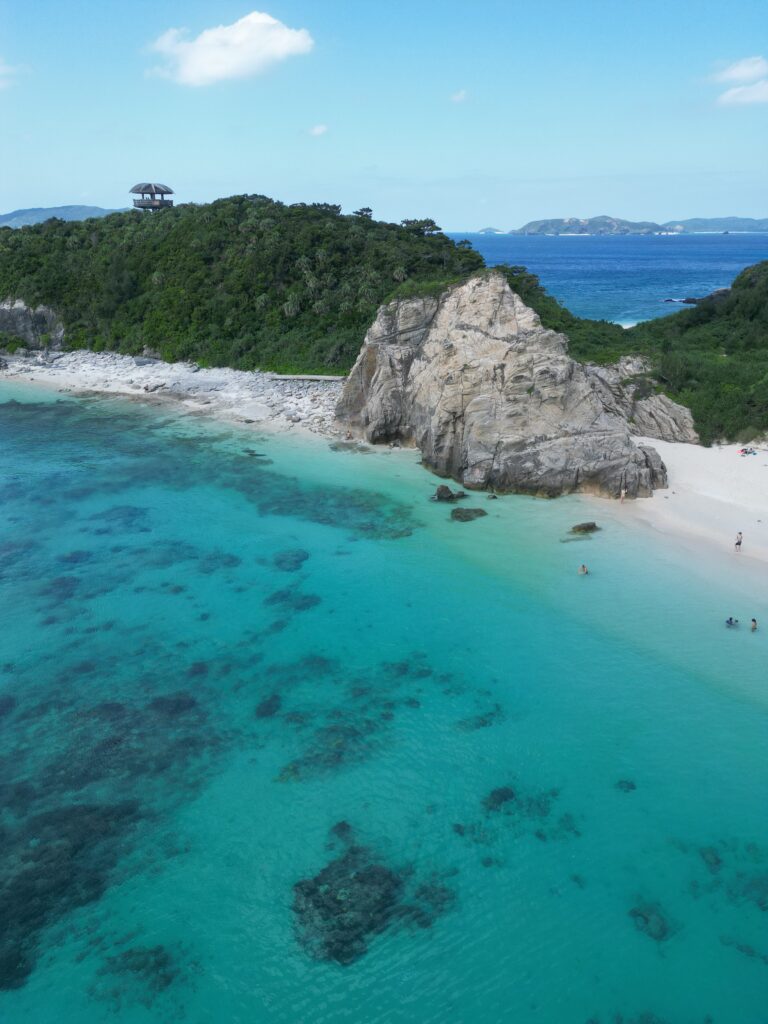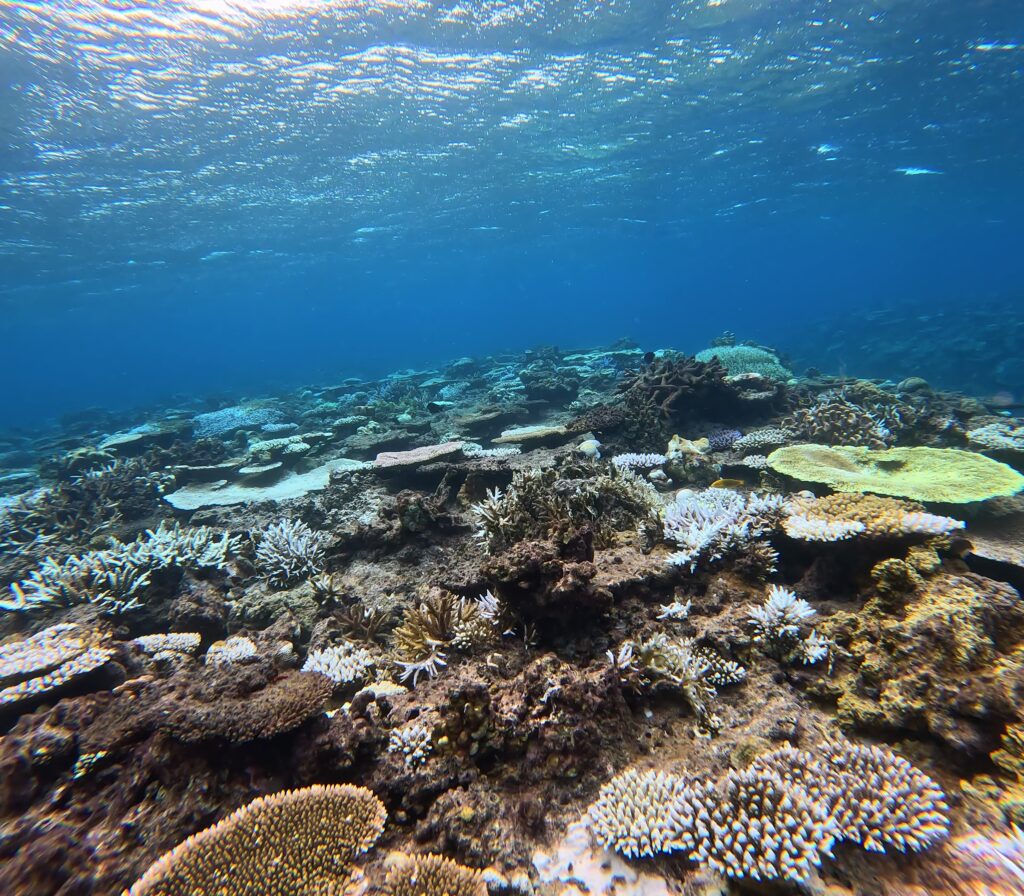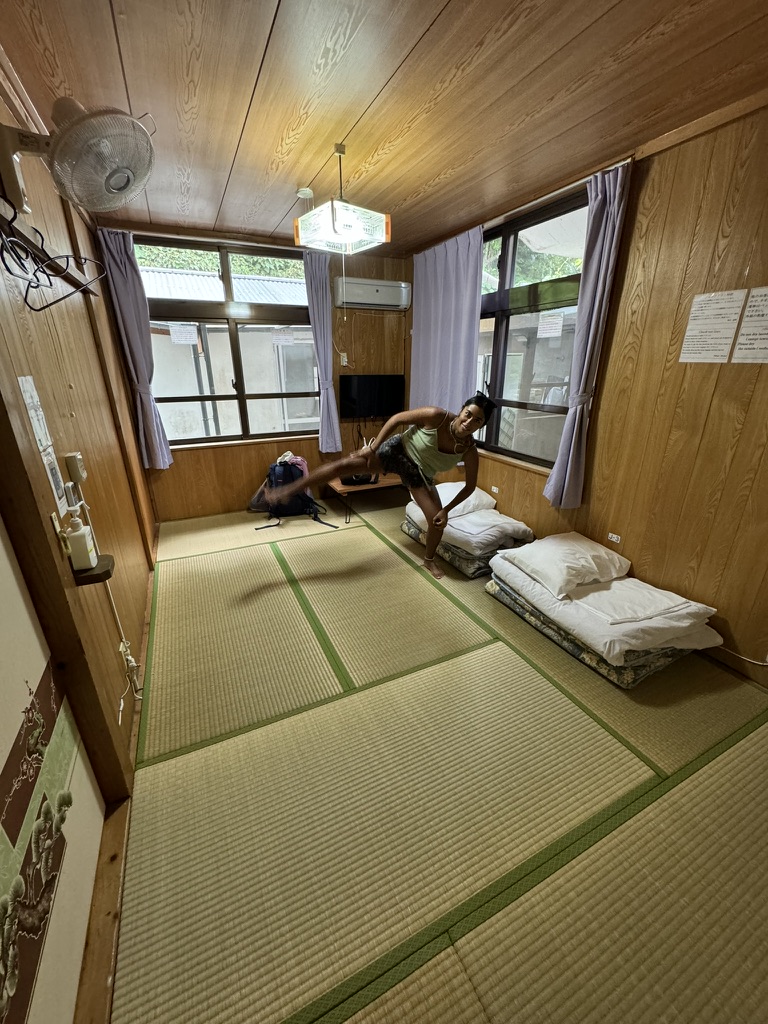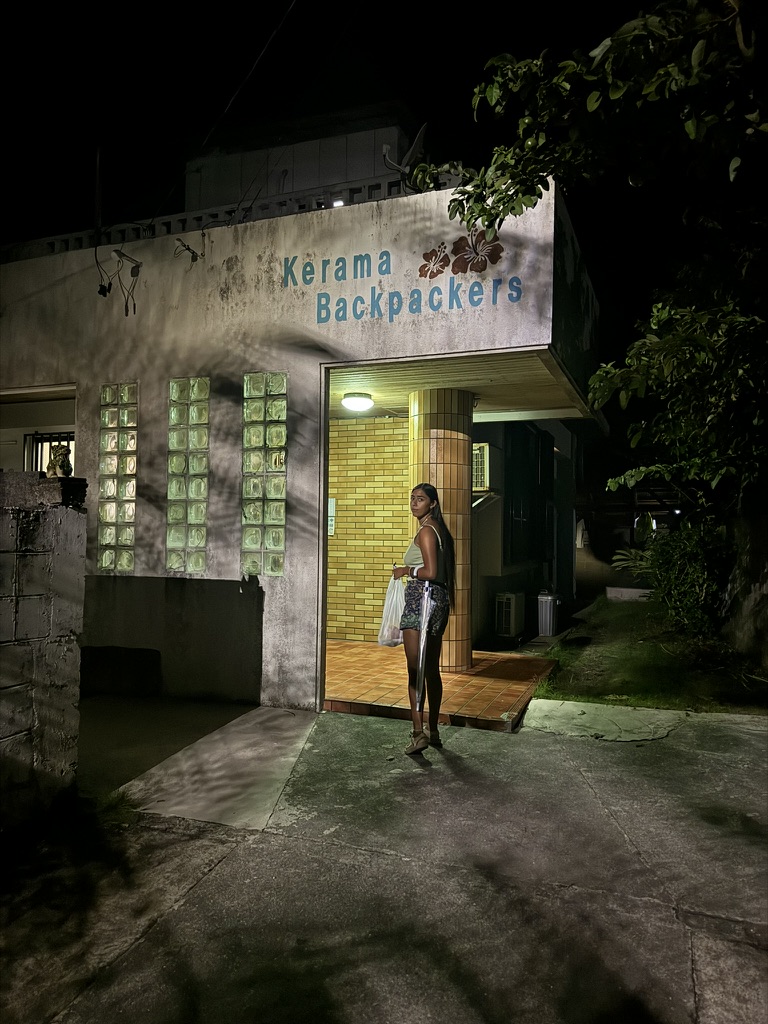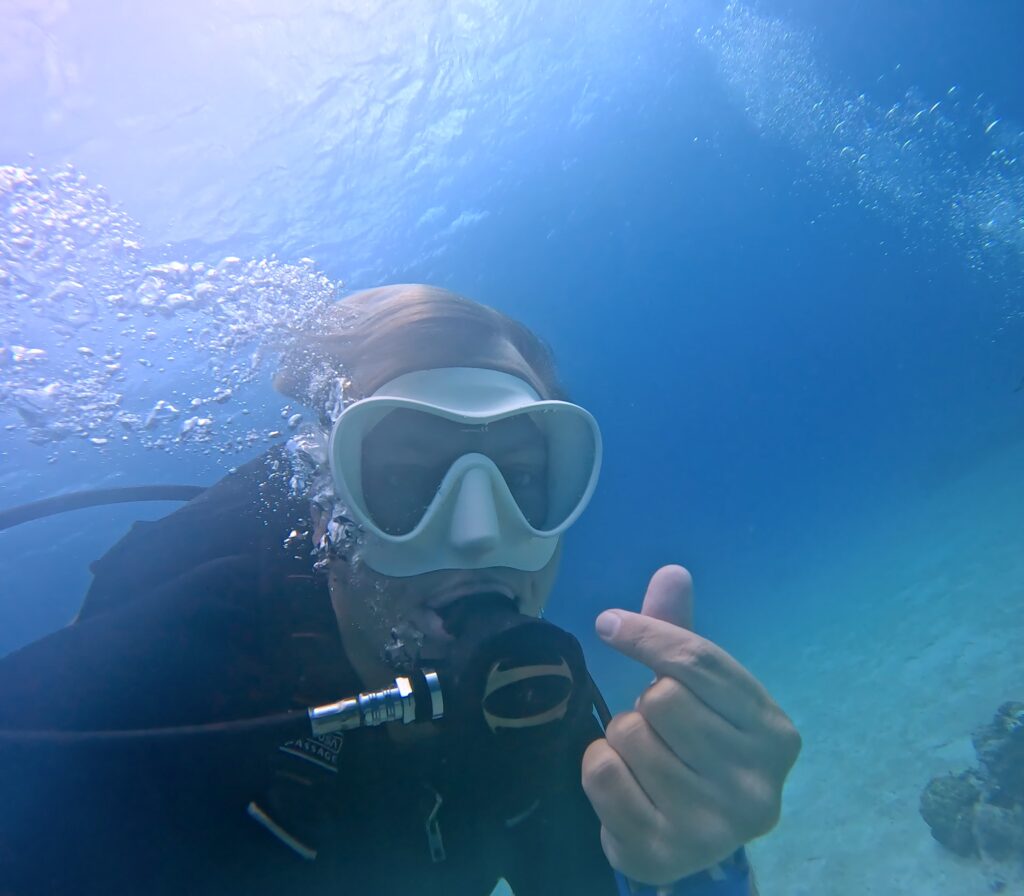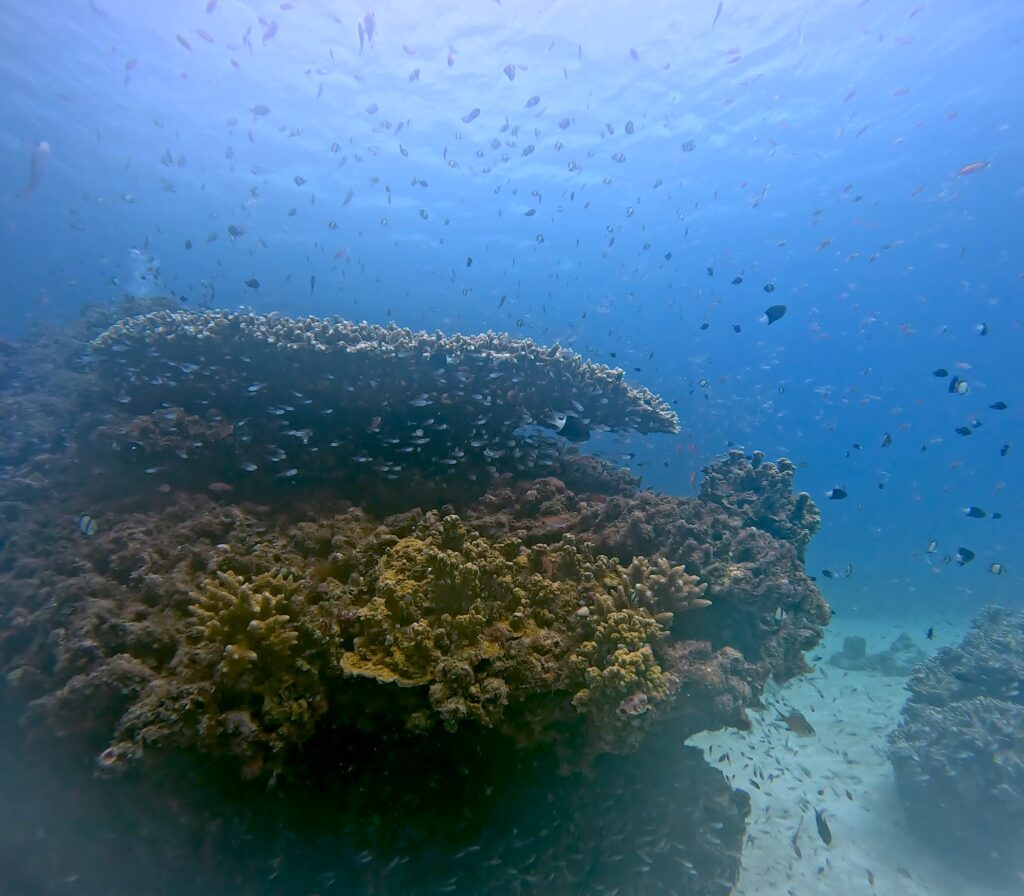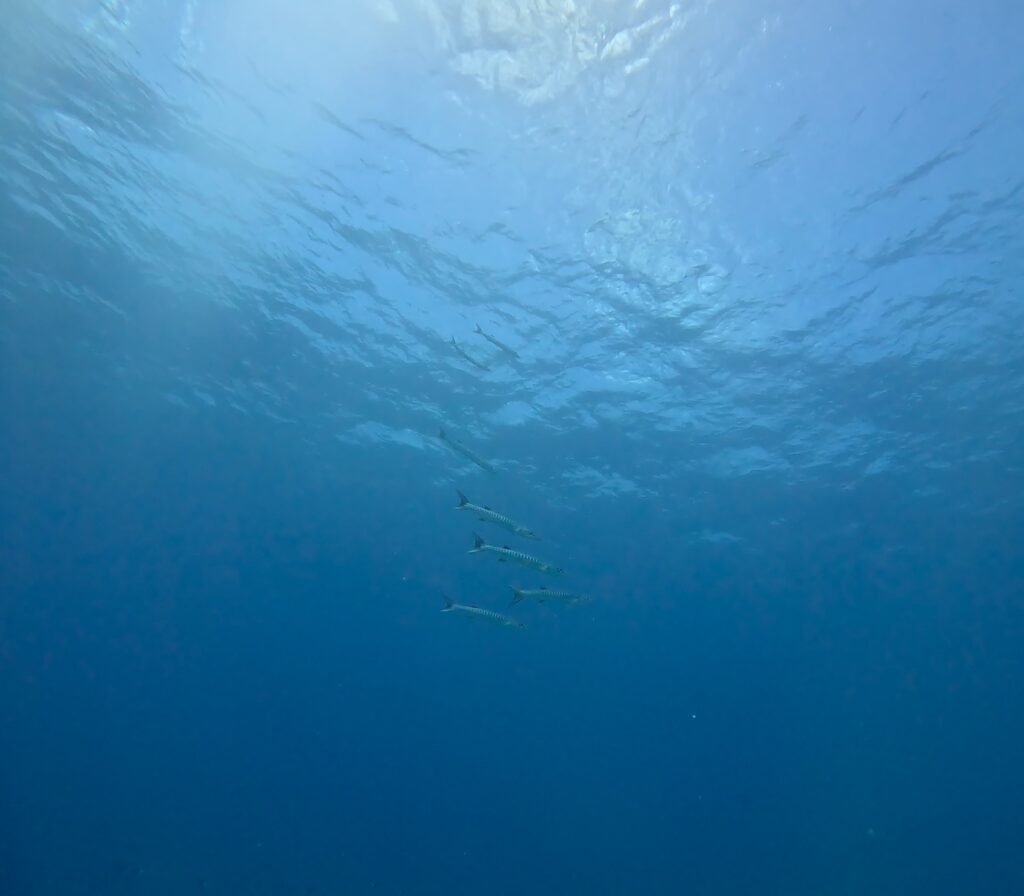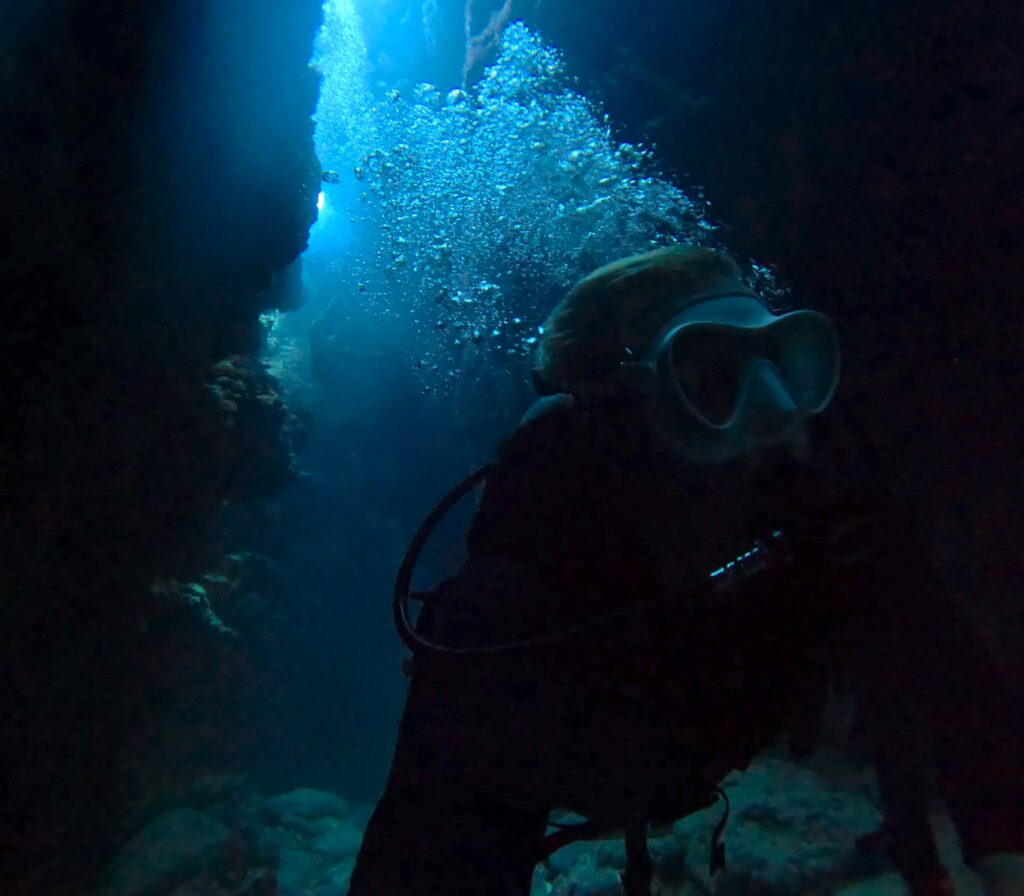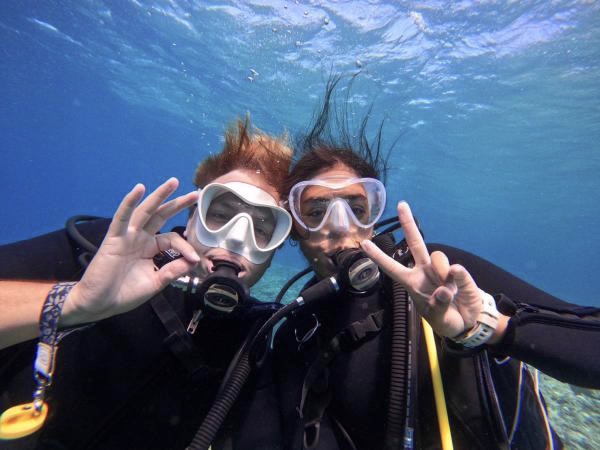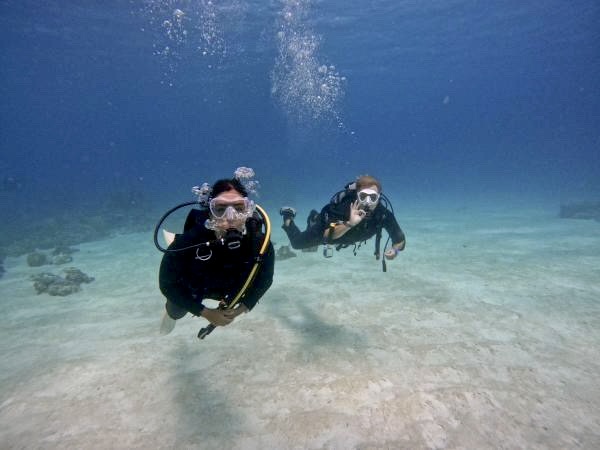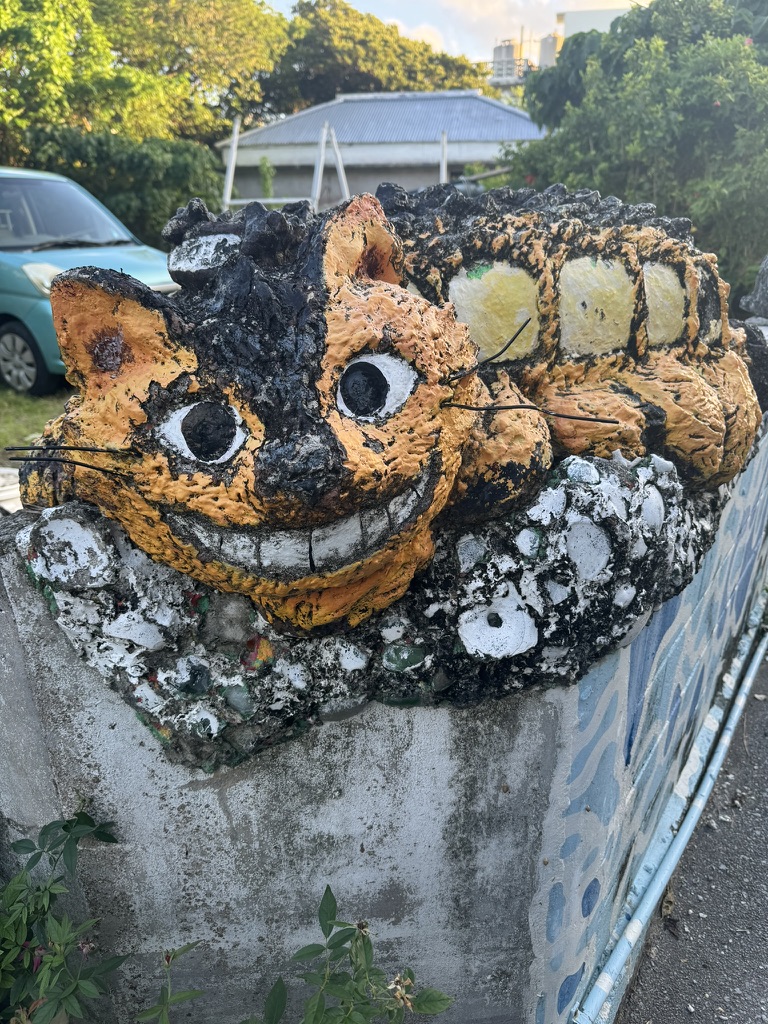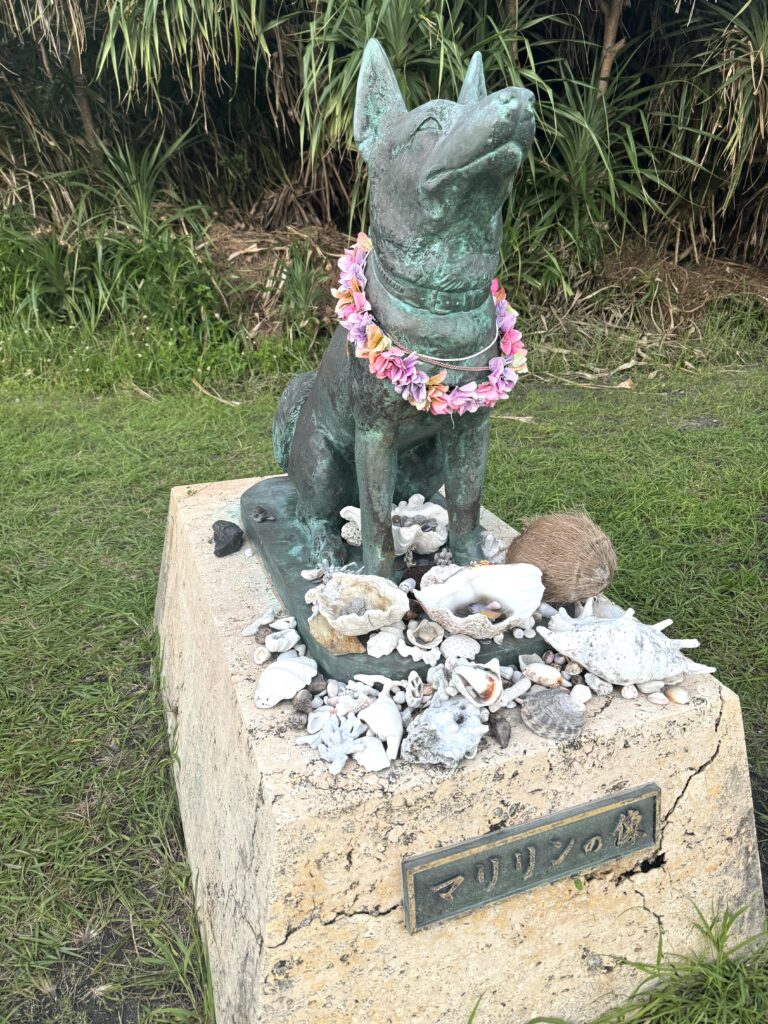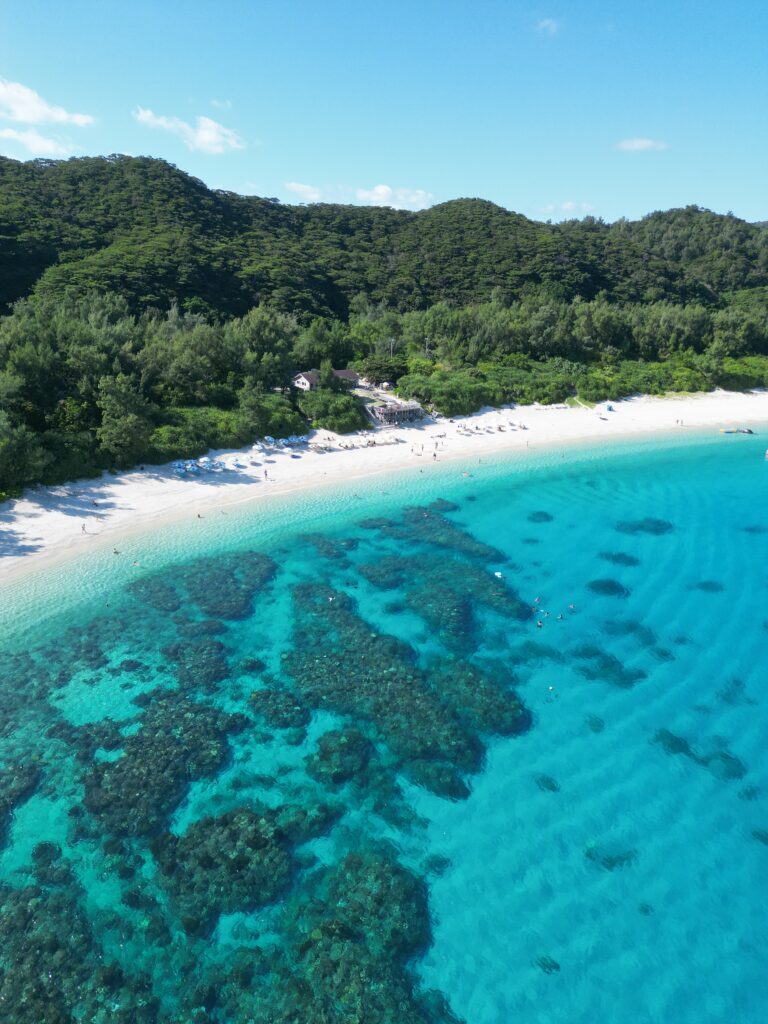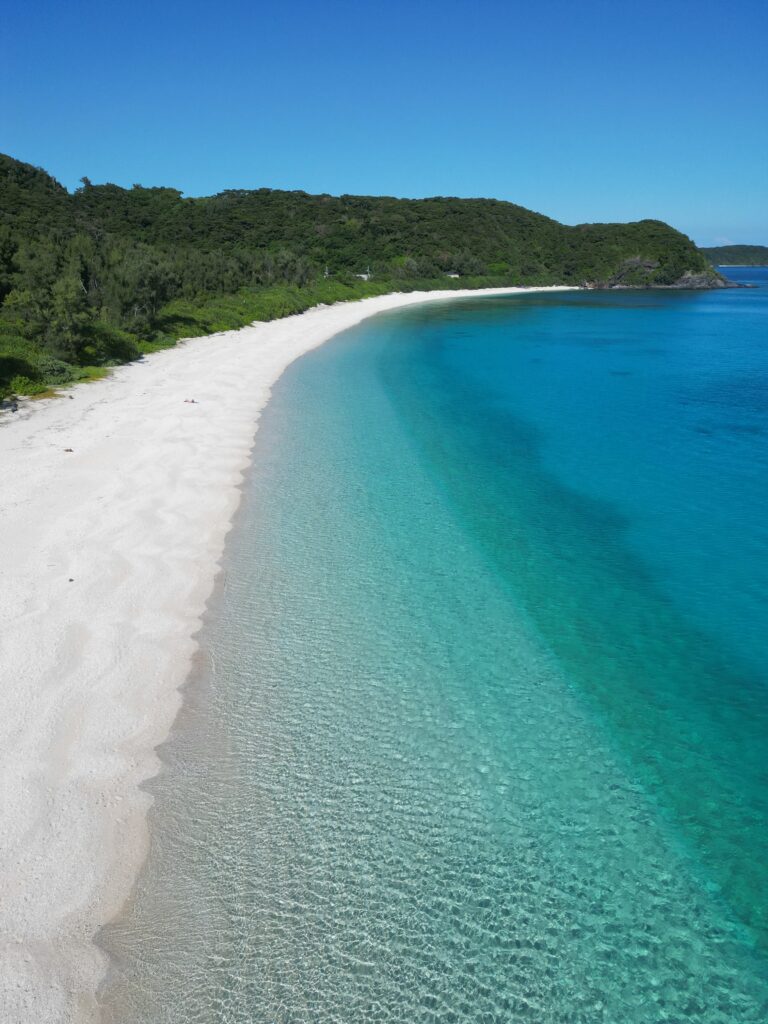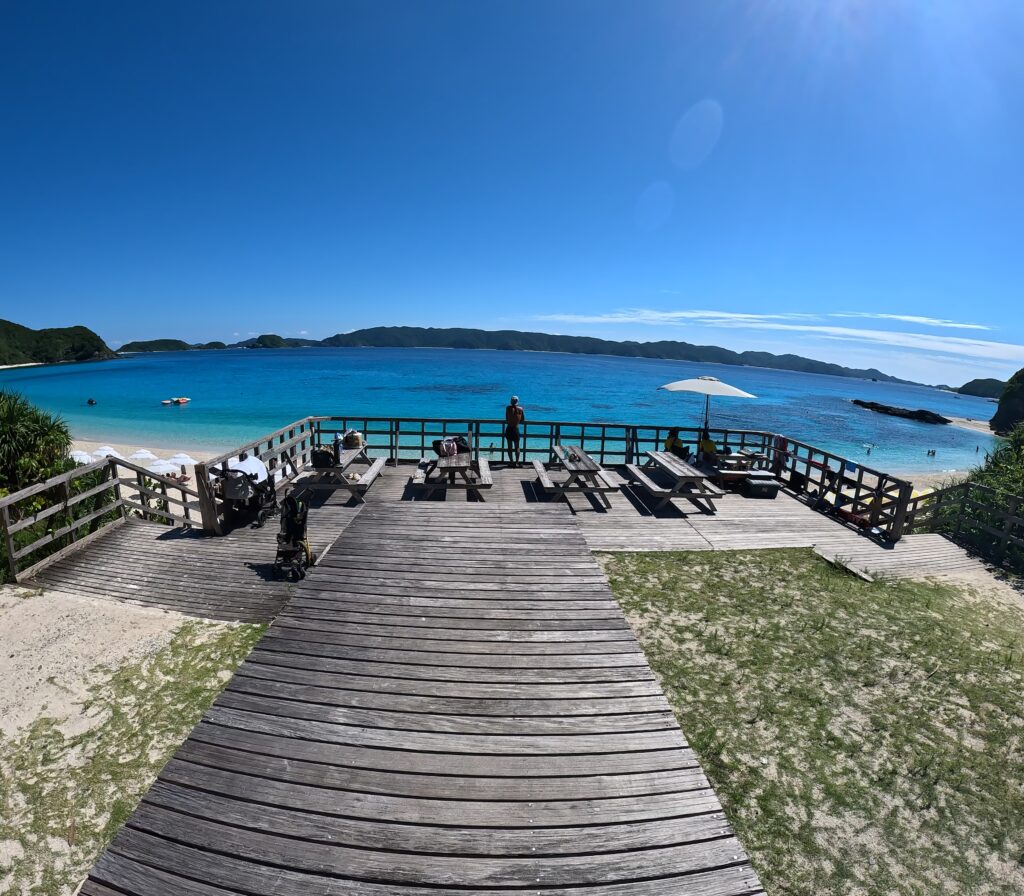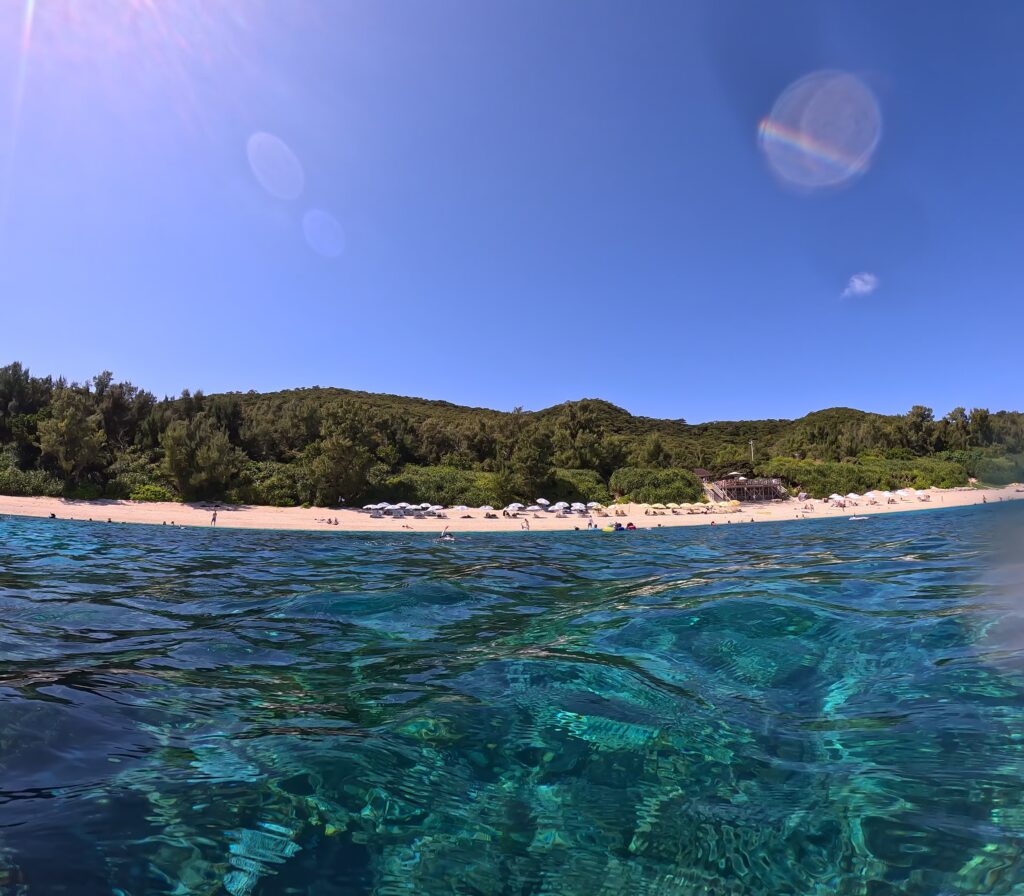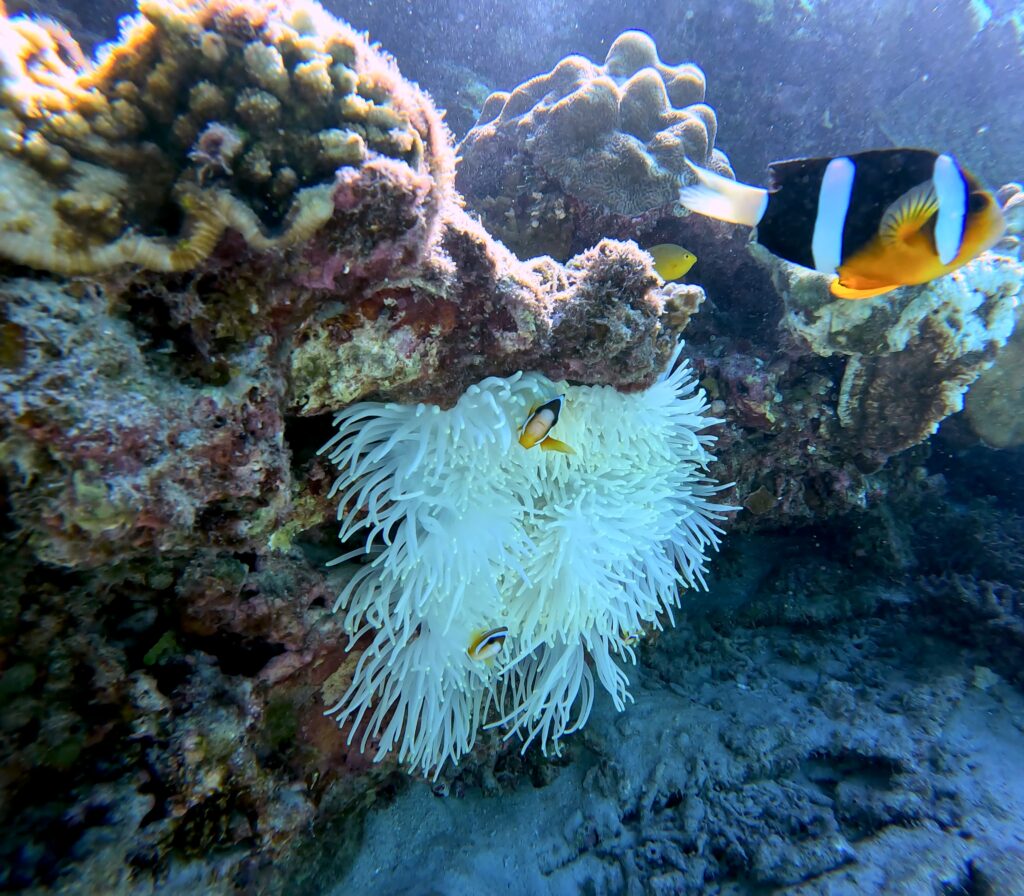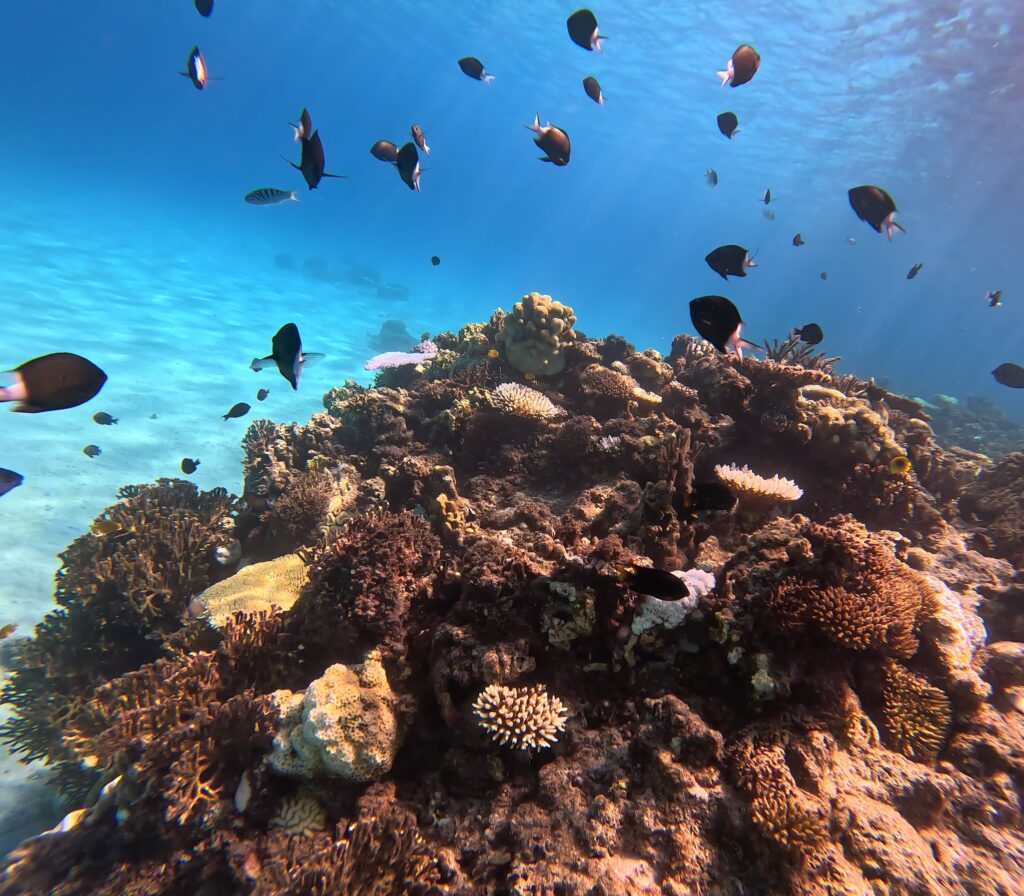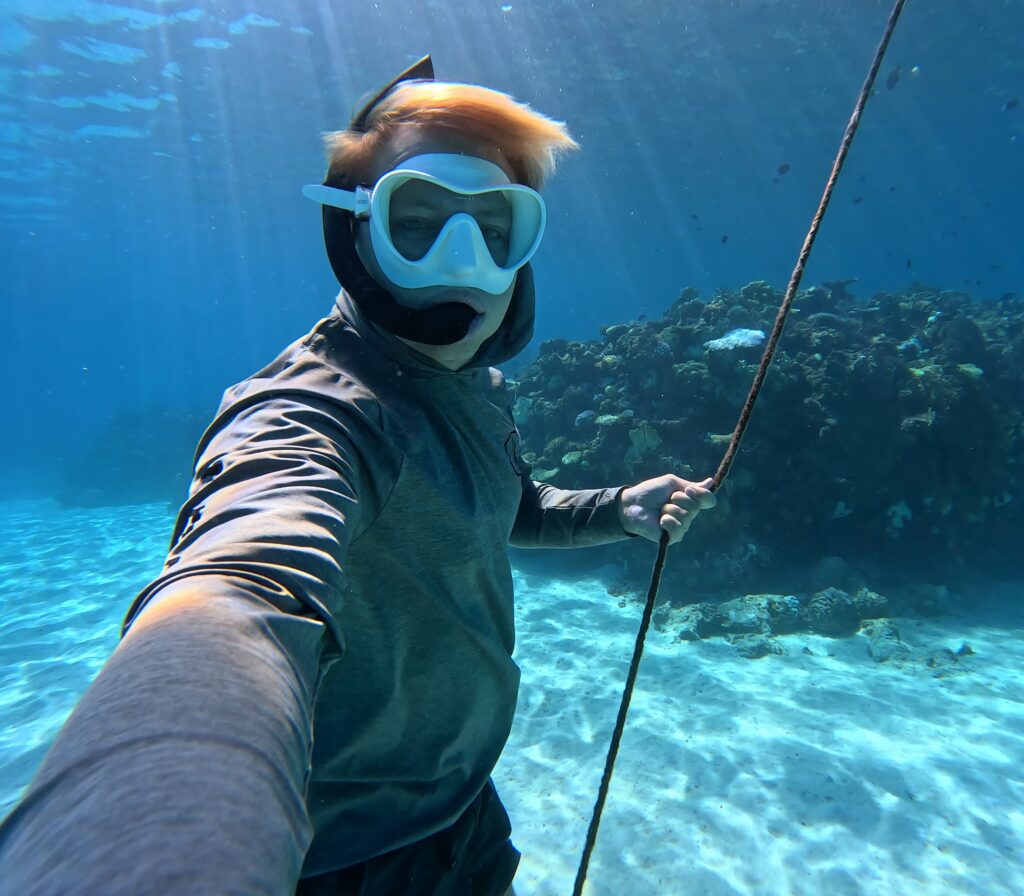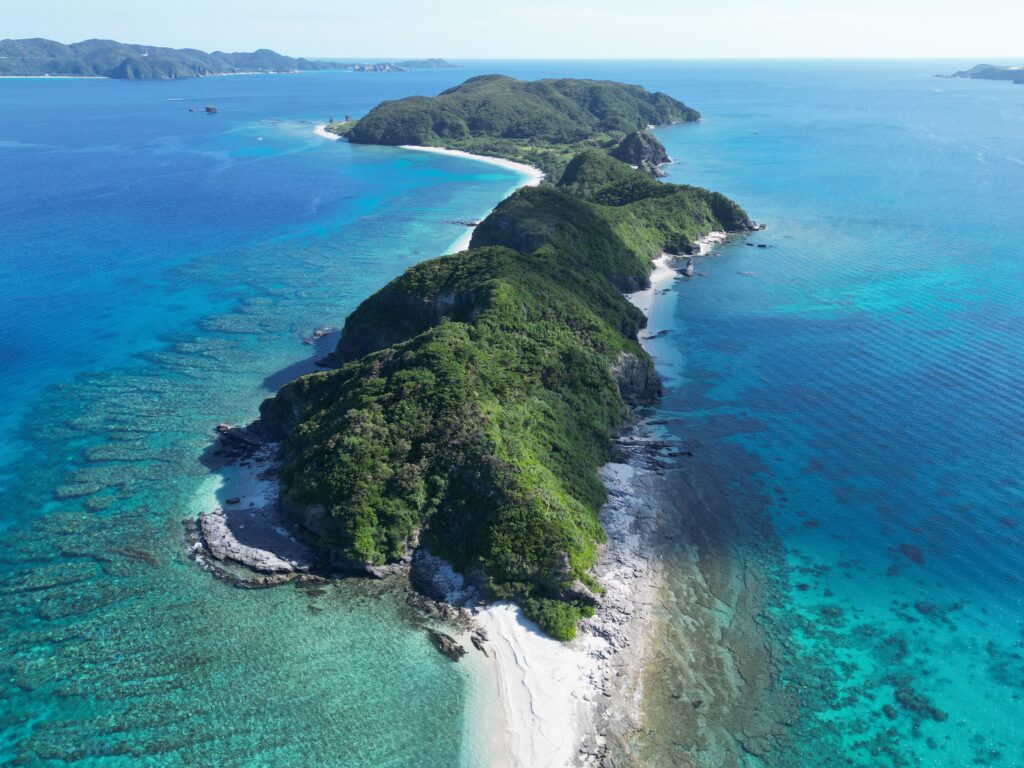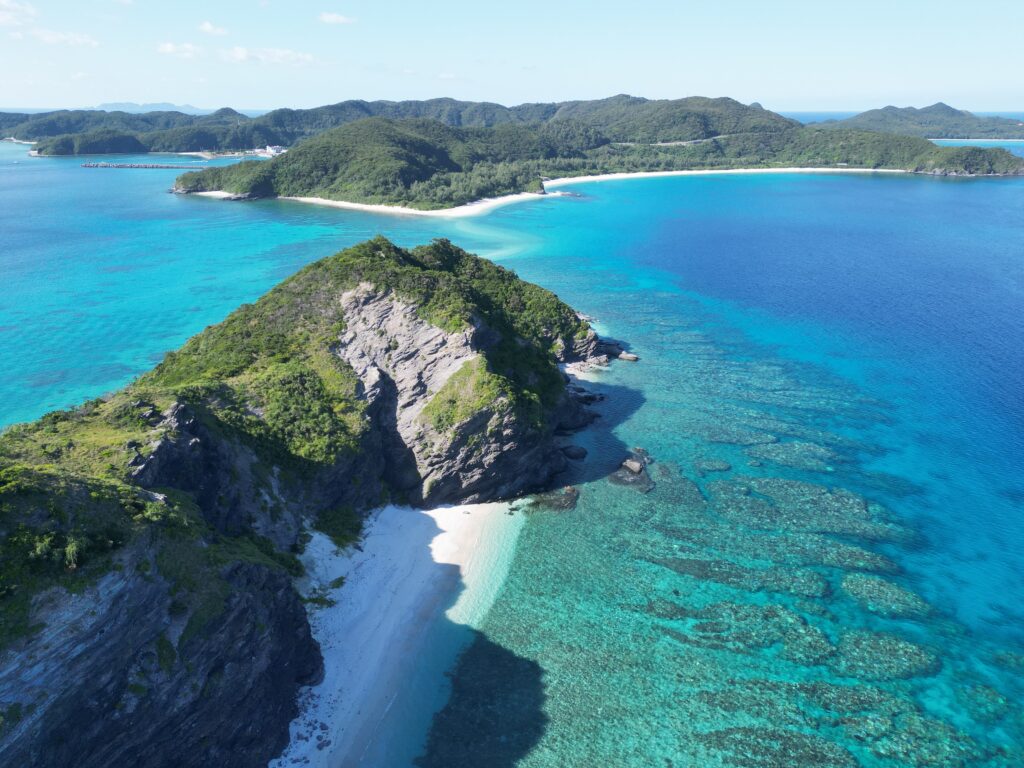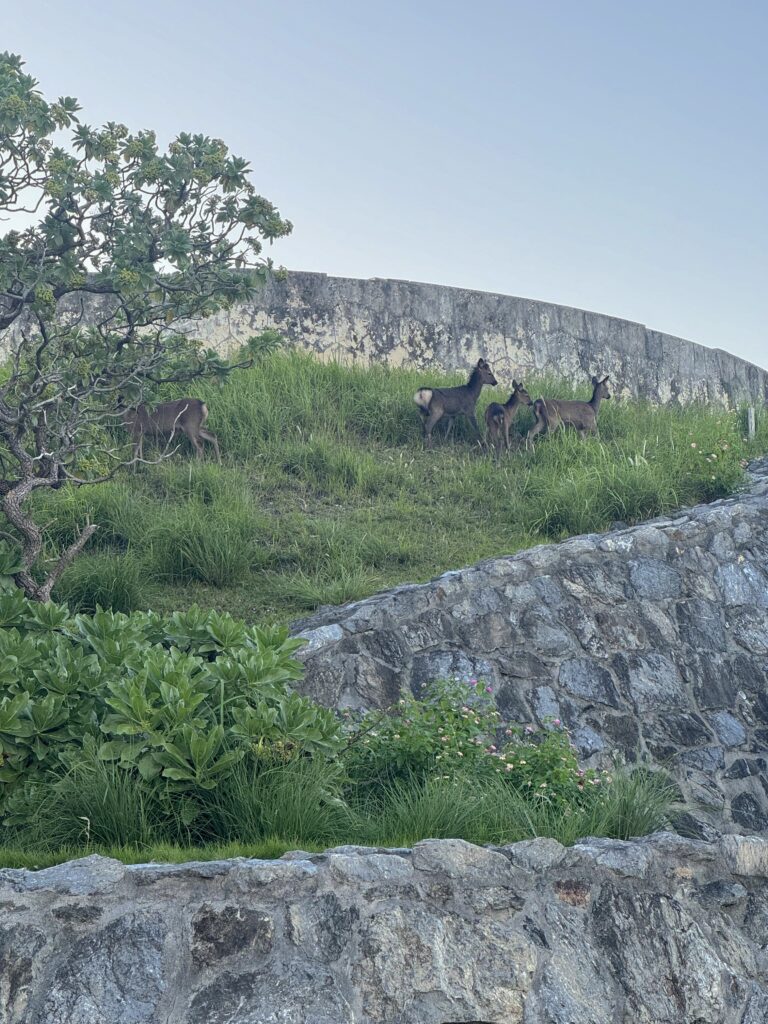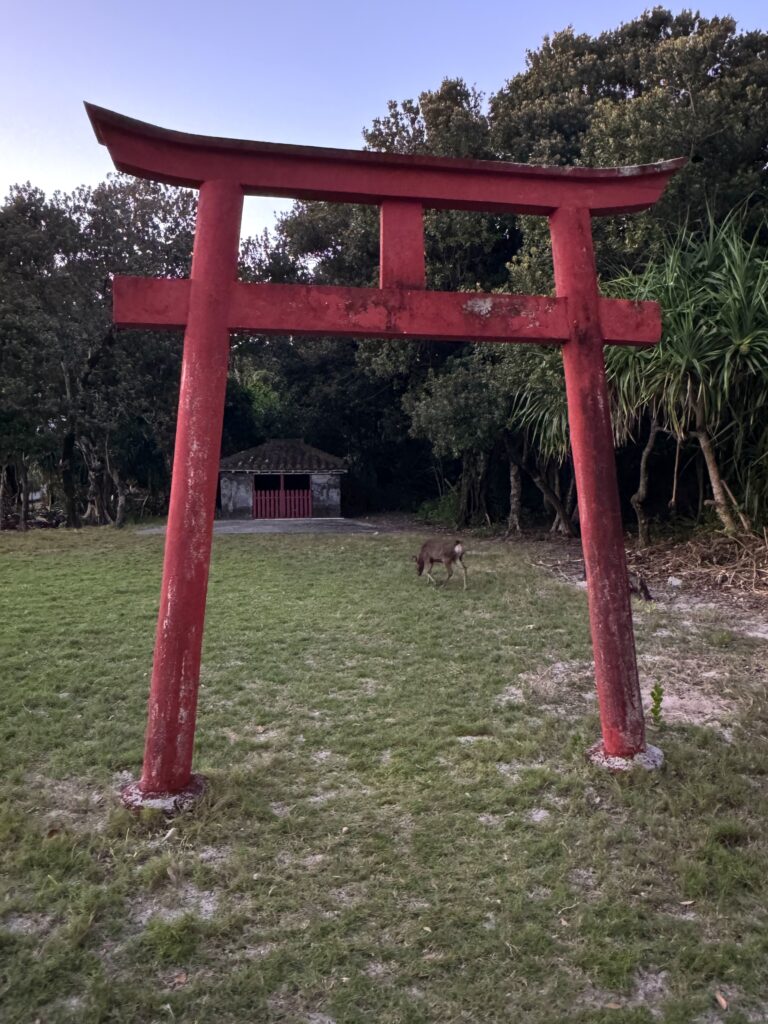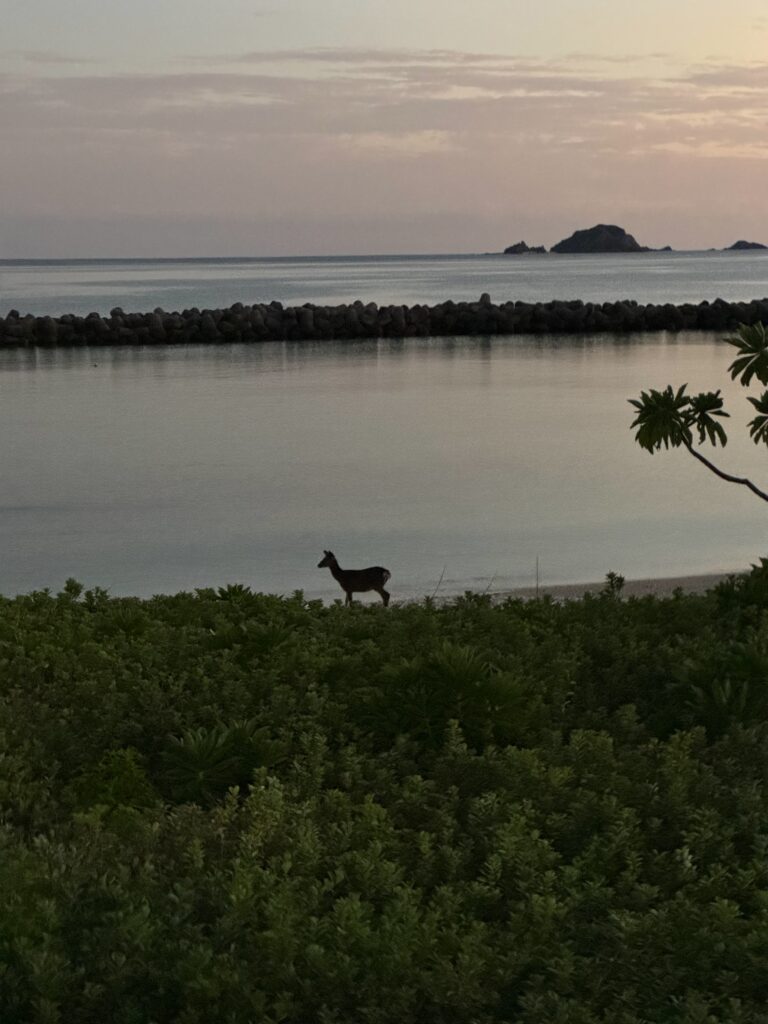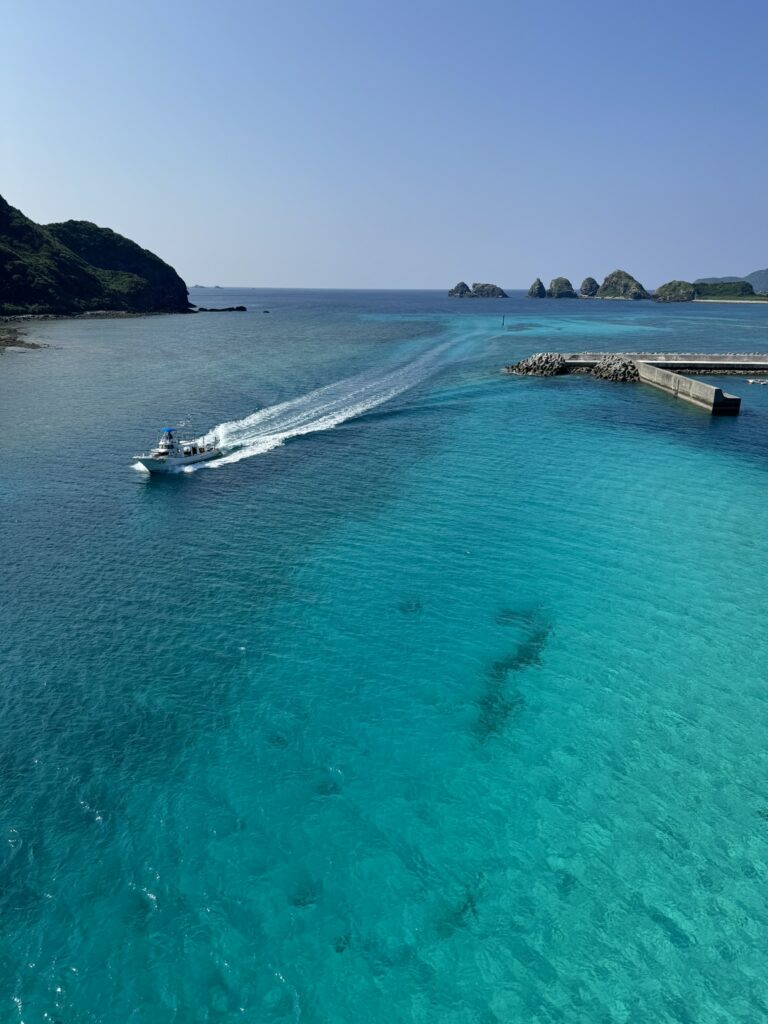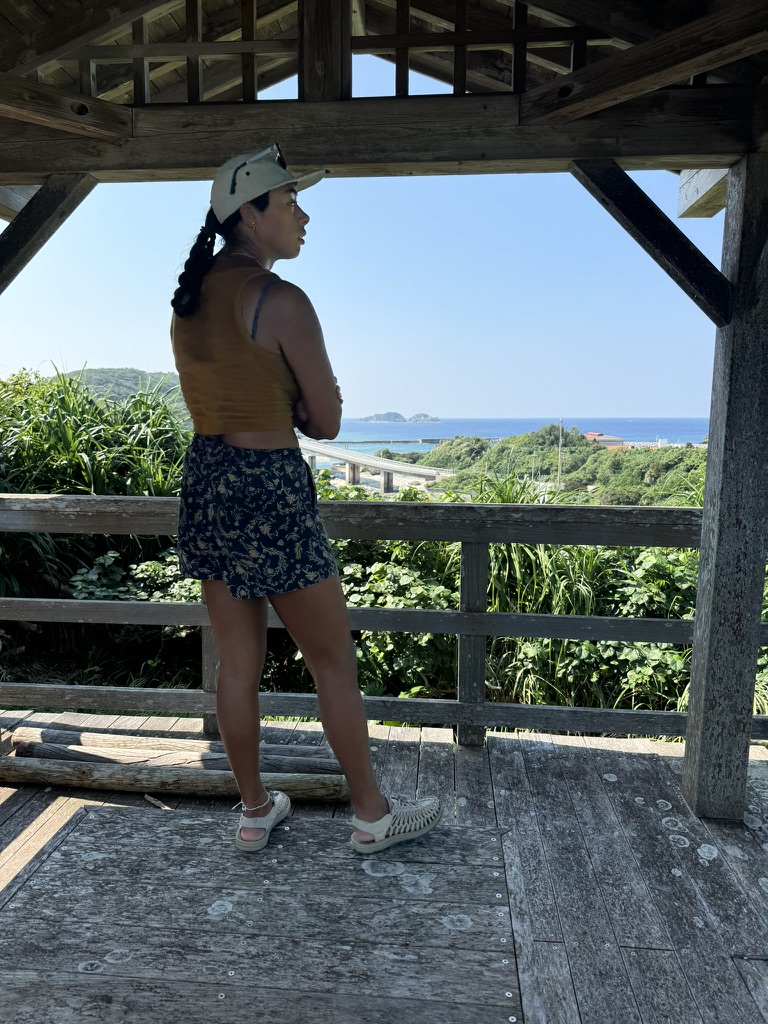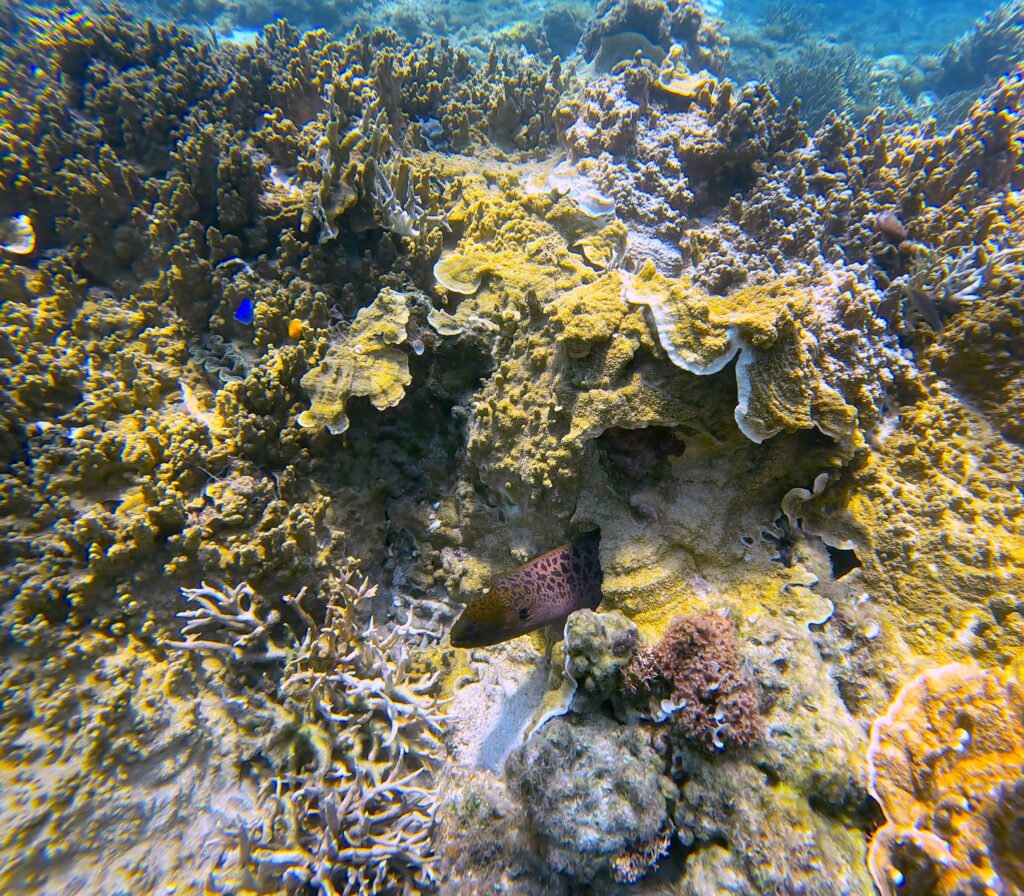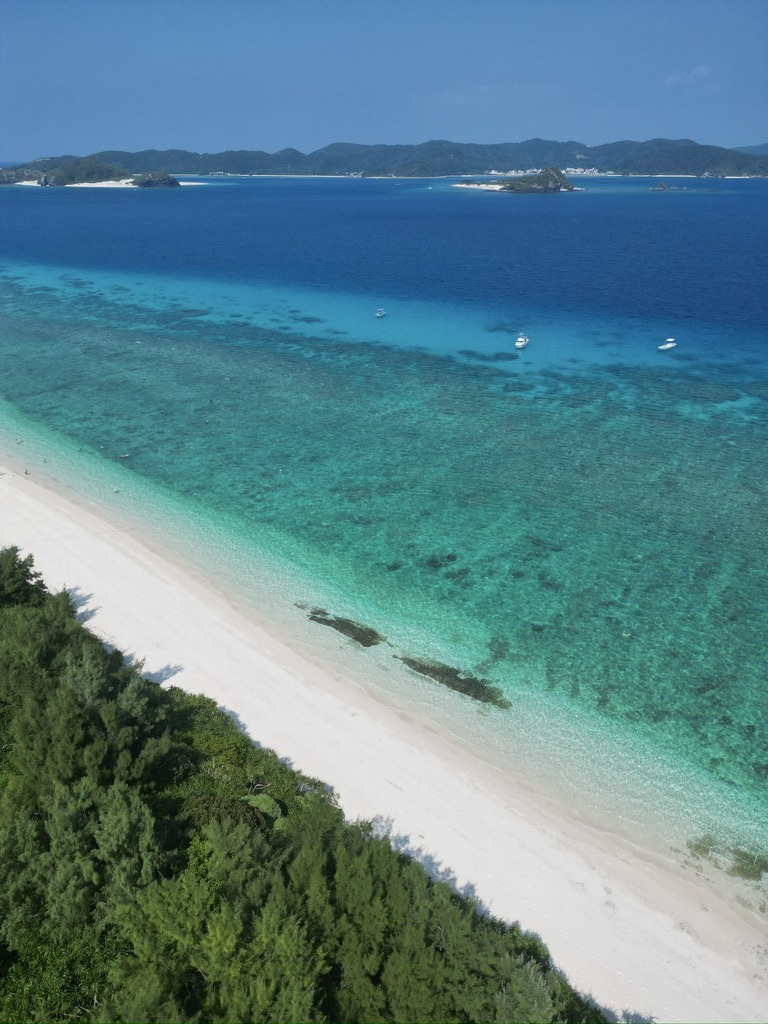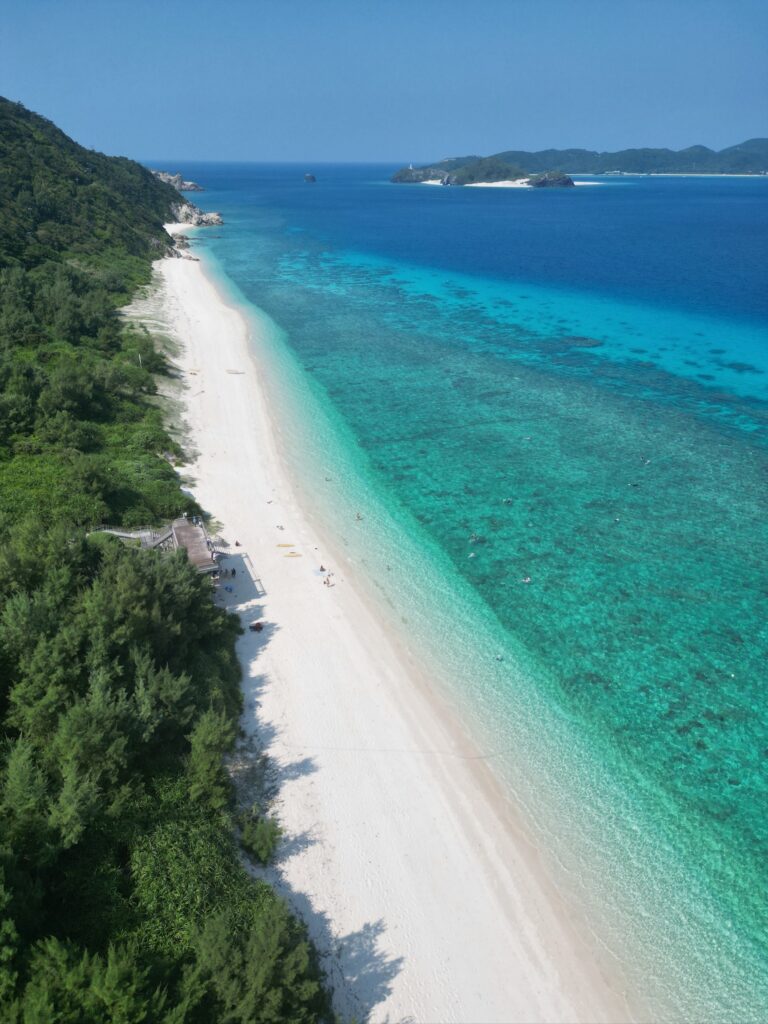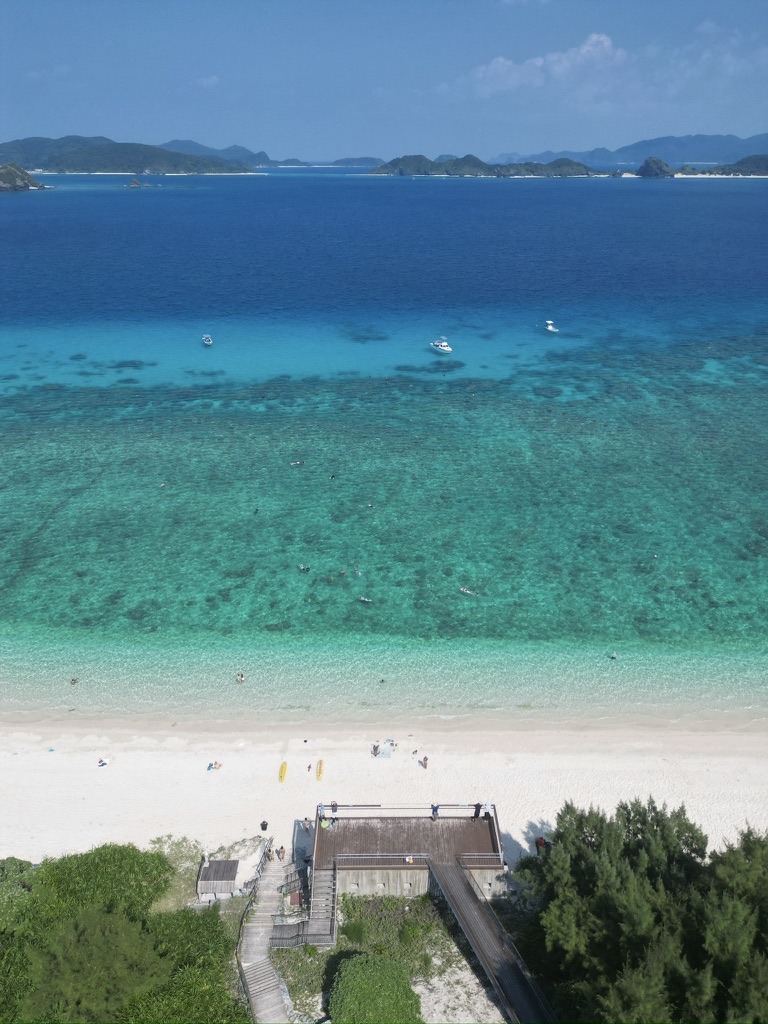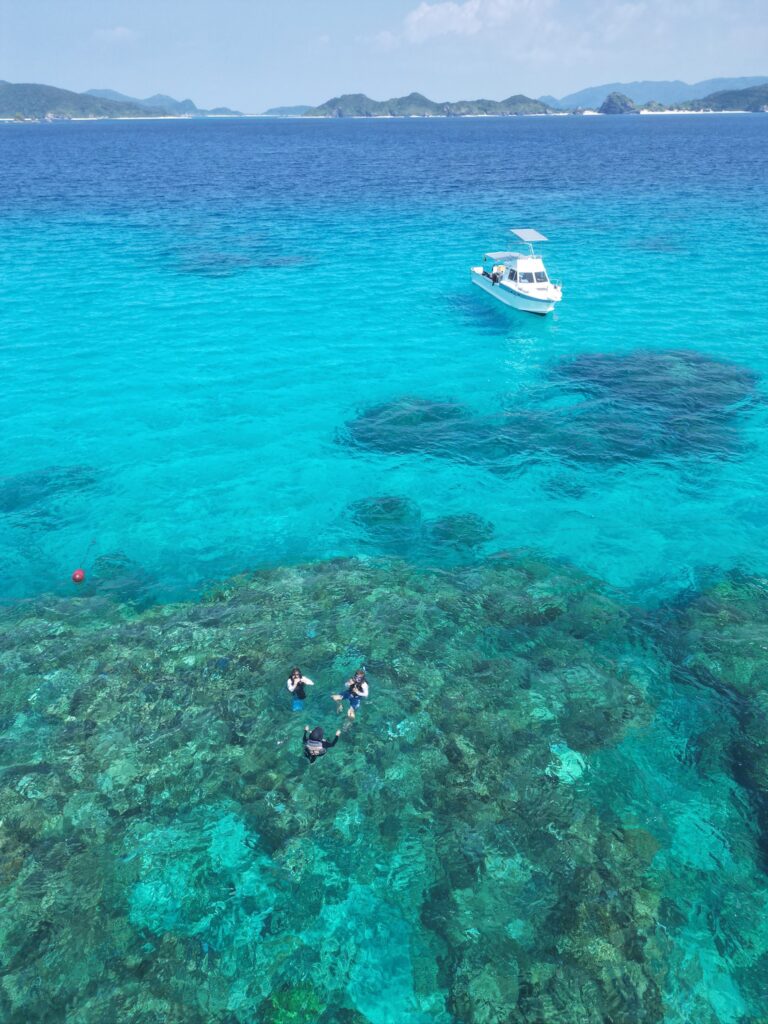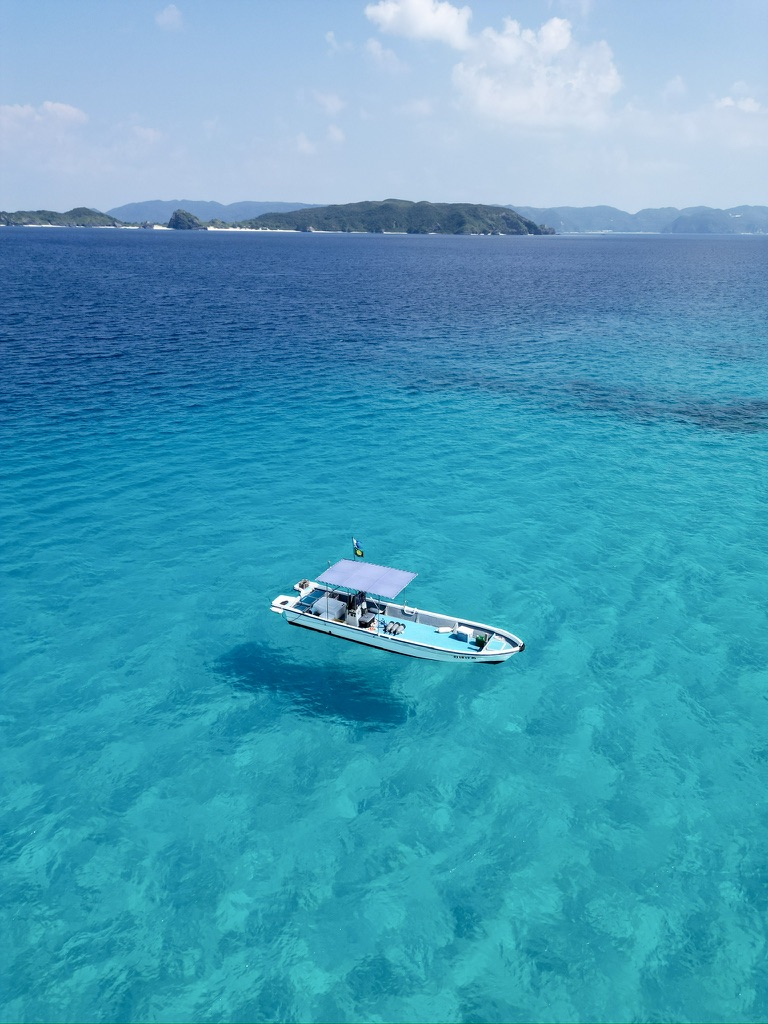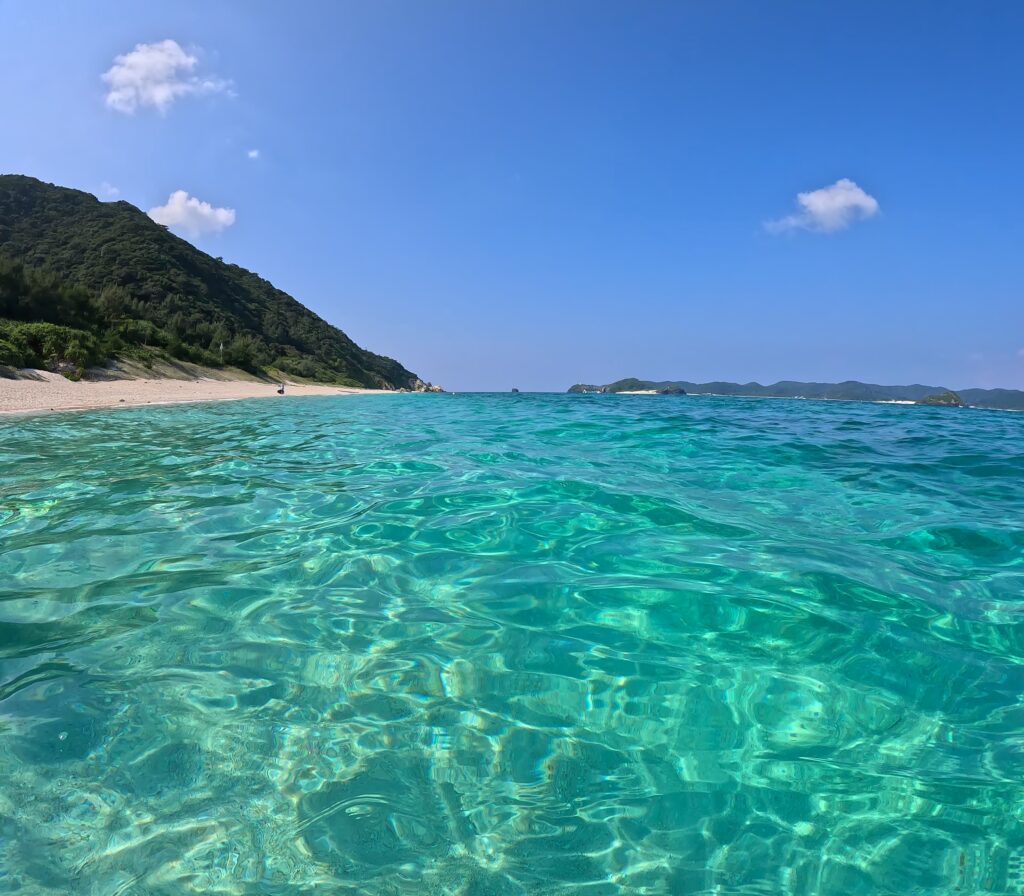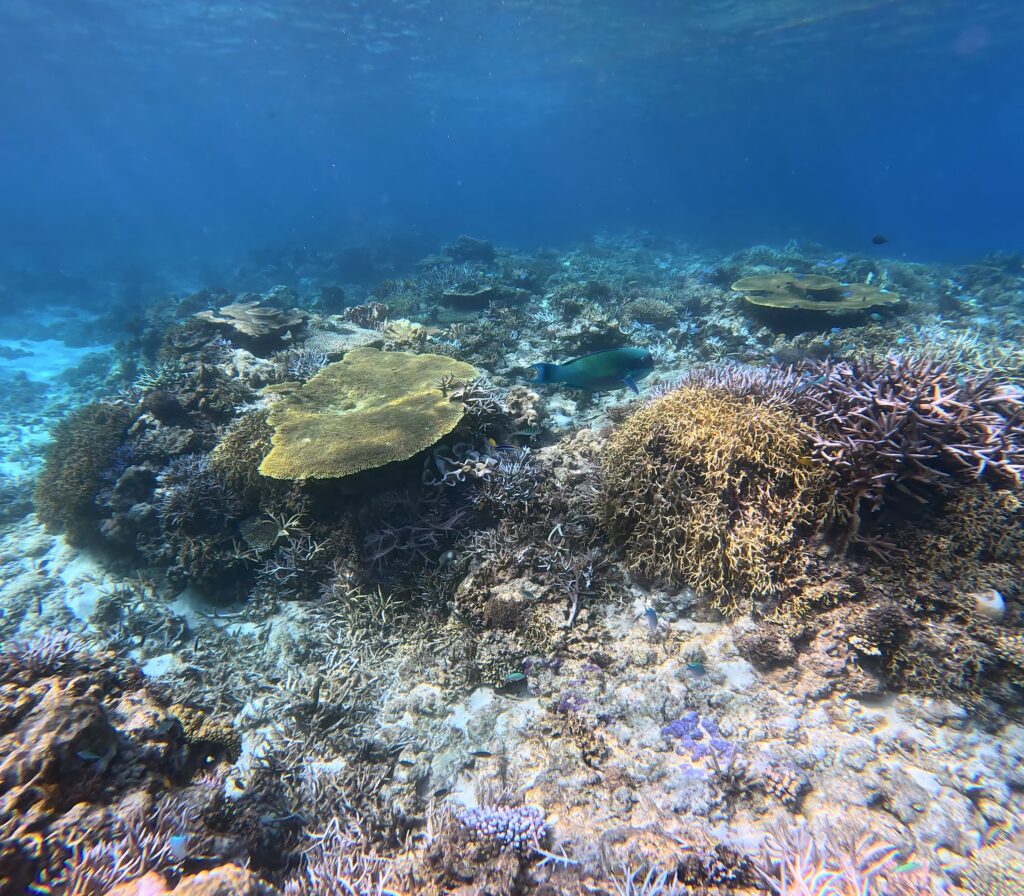Okinawa
7 October 2024

Okinawa was our gateway to a slower, more laid-back side of Japan. While the main island has its share of history and city life, we spent most of our time on one of the Kerama Islands, where white sand beaches, clear blue water, and quiet coastal villages made for one of the most pleasant destinations of my life.
Day 1 - Naha
- Naminoue Beach
We flew from Taiwan to Nara, Okinawa on a short flight. We took the Skyrail from the airport to a stop relatively close to our hotel. My first impression of Okinawa was that it didn’t feel as polished as Taipei. As we walked, it started to feel like stepping back in time—everything was clean but noticeably older, with lots of white and beige buildings.
On the way to the hotel, we stopped at Lawson’s because Indi was starving. I grabbed a piece of grilled chicken and a potato croquette—both were good, but the chicken was amazing. We paused eating mid-walk after remembering that eating while walking is considered bad manners in Japan. After a quick fact-check from Indi, we stood next to a vending machine to finish our snacks once we were sure that was acceptable. When we got to the hotel, Indi checked in at a separate building. The bed was small, but the place was nice.
Naminoue Beach
We went to Naminoue Beach for sunset, but the view was mostly blocked from where we were. It’s a pretty beach with a giant freeway overpass built over it. I guess there are enough beautiful beaches on the islands that they didn’t mind. I got in the water within the jellyfish net area, the water was a lukewarm temperature that would have felt better in the heat of the day. We decided to extend our stay another night in Naha.

After sorting out extending our stay at the hotel office, I changed, and we walked to a sushi place Indi found online—or at least we thought we did. She realized we were at the wrong restaurant only after we had already been seated and looked at the menu. The menu was full of other, mostly unfamiliar items. It did have one sushi option, though. We went with it and ordered miso soup and a sushi plate. I had an eel nigiri, and my world shifted—I’ve always loved eel, but this was on another level. The fatty tuna nigiri was another standout.
Afterward, we went to a spot for classic Okinawan food, but instead of sharing a plate as I expected, Indi said Poobie had told her that it is impolite in Japan to share a plate. So, we each got our own massive portions—only to then find out that not finishing your food is also rude, and taking leftovers home isn’t a thing. I powered through mine, but Indi couldn’t quite finish hers. We had a lot to learn about Japanese customs.
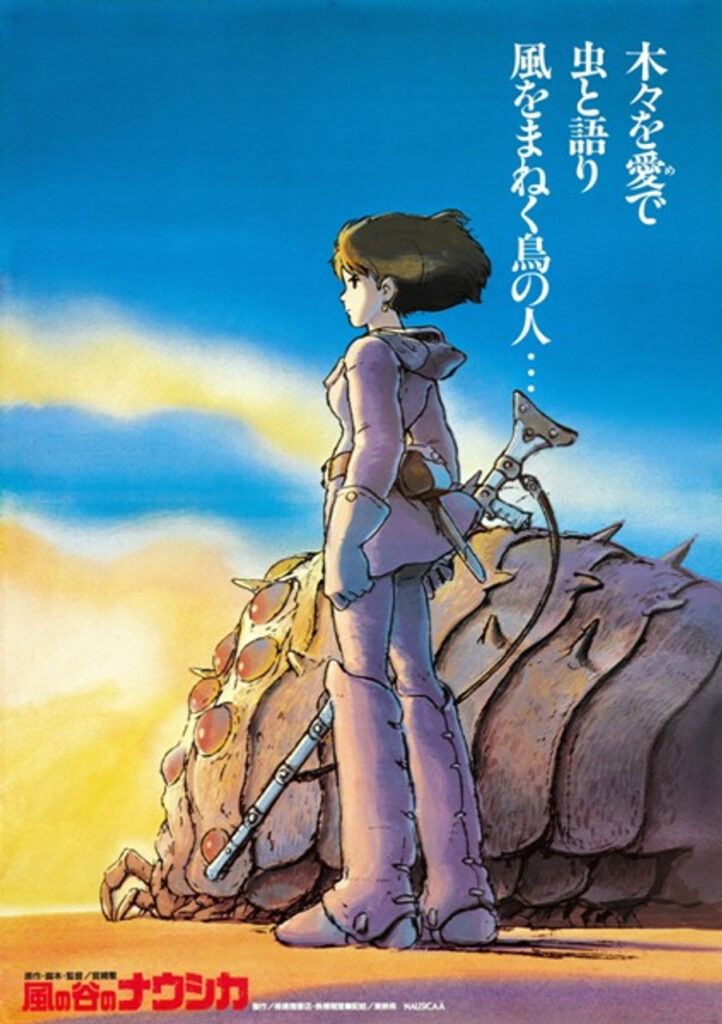
I decided it would be fun to watch a new Studio Ghibli film every night (when possible) in Japan. Indi went to the store and got some movie snacks while I did some studying.
We ended up watching a Studio Ghibli movie called Nausicaä. I didn’t have high expectations, but I liked it a lot. It was essentially a retelling of Princess Mononoke. We stayed up way too late.
Day 2 - Naha
- Naha Kokusai Dori Shopping Street
- Makishi Public Market
We stayed up way too late and ended up sleeping in until around 11:00 am. We didn’t leave the hotel until noon. We planned to travel to the Kerama Islands the following day but hadn’t booked anything yet. I had tried to book ferry tickets in advance, but couldn’t figure out how to navigate the Japanese websites. So, I decided to figure it out once I got there. We walked to the Tomari Ferry Terminal – about 20 minutes away, and had to buy an umbrella on the way because it was raining. We found out the hard way that planning a trip to the Kerama Islands is anything but straightforward. It took forever to plan out how we were going to do our trip. We managed to book a ticket to Tokashiki Islands the following day, for one of the tickets I needed to call and make a reservation to buy the ticket, and for the ferry, I could only buy it the day of, at the terminal. My only advice to you if you are planning a trip is to arrive a full day or two before you want to leave to the Kerama Islands to sort everything out.
We finally had our trip planned out, including a reservation for the next day’s ferry and a ferry back the day we were to fly to Osaka.
Naha Kokusai Dori Shopping Street
We walked along Naha’s Kokusai Dori Shopping Street, a long stretch filled with souvenir shops, restaurants, and food stalls selling local snacks like beni imo tarts. Many stores carried Okinawan glass, shisa dog statues, and other regional goods, with some variety but a lot of repetition. At one point, we ducked into a side street that led to a covered market with even more shops and food stalls. It was busy but not overwhelming, a mix of touristy spots and local businesses. Along the way, we stopped for mango ice cream and Okinawan-style donuts—Sata Andagi, deep-fried dough balls with a crispy golden-brown exterior and a dense, cake-like interior.
For lunch, we had soba which is a kind of noodle dish and it was amazing. Okinawan soba is different from the more common Japanese soba in that it uses wheat noodles instead of buckwheat, giving it a chewier texture. The broth is typically pork-based, which has a rich, savory flavor. Unlike traditional soba, which is usually served cold with dipping sauce, Okinawan soba is served hot in a bowl of broth.

Makishi Public Market
We walked through Makishi Public Market, a two-story market packed with fresh seafood, meats, and local Okinawan ingredients. The first floor had vendors selling everything from whole fish and shellfish to pork cuts and tropical fruits. Some stalls had tanks with live seafood, and a few offered to cook what you bought upstairs. We went up to the second floor, where there were small restaurants serving Okinawan dishes. It felt like a mix of a traditional market and a casual food court, with locals and tourists both stopping to eat.
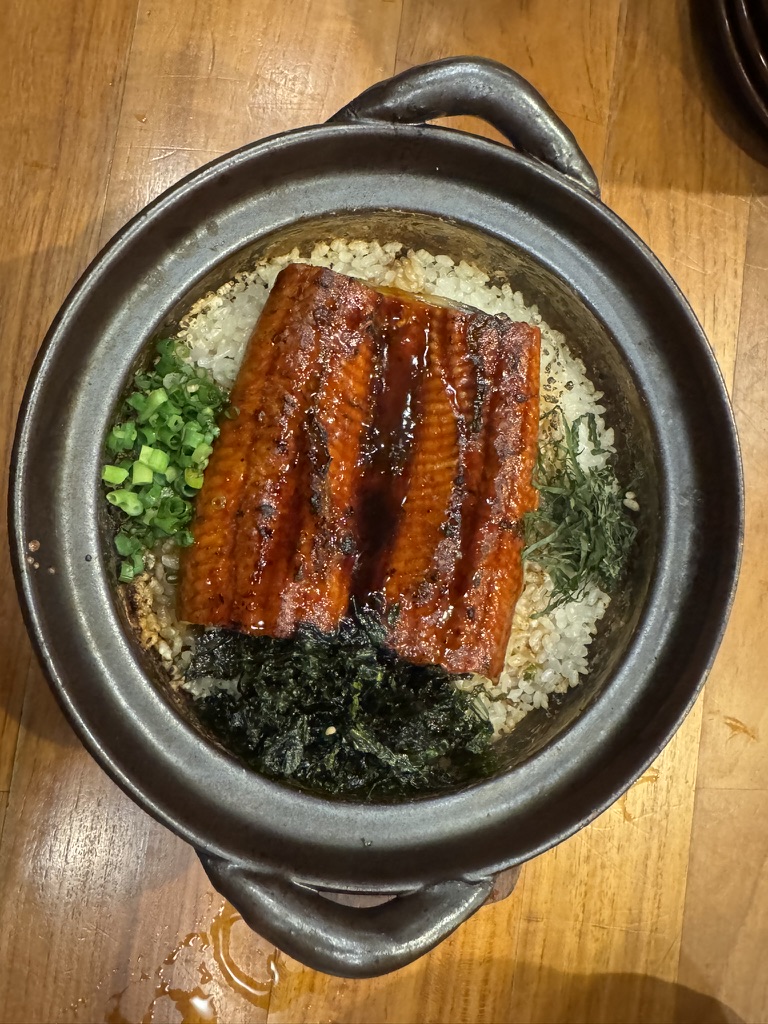
I had been looking forward to Japanese eel bowls since I set out on this trip. I didn’t like it! I was confused by how fishy. it tastes. I would go on to try eel a couple more times in Japan before I finally realized that there are two types of eel commonly served in Japan. Unagi is freshwater eel, usually grilled and coated with a sweet soy-based sauce. This is the eel I love on sushi. Anago, on the other hand, is saltwater eel (Japanese Conger Eel), which is usually simmered or lightly grilled with a less sweet sauce than unagi. This eel I don’t love, it tastes fishy to me.
Day 3 - Tokashiki Island
- Naha Kokusai Dori Shopping Street
- Makishi Public Market
The Kerama Islands
The Kerama Islands are a small group of islands west of Okinawa, known for their clear waters, coral reefs, and marine life. There are three main inhabited islands: Tokashiki, Zamami, and Aka, with ferry services connecting them to Naha. The ocean’s color is so vivid they just call the color “Kerama Blue”, because there are now words to capture it. The clarity and vivid color are due to the region’s clean ocean currents, white sandy seabed, and abundant coral reefs, which enhance the reflection of sunlight. Historically, the islands were the site of one of the first battles of the Battle of Okinawa in World War II. Many residents, fearing capture by U.S. forces, were coerced into mass suicides by Japanese soldiers.
Tokashiki Island is the largest of the beautiful Kerama Islands. It’s common to stay on Tokashiki and go on tours to the surrounding area. I don’t know if there is a wrong way to travel the Kerama Islands, but we decided to spend at least one night on all three.
Aharen Beach
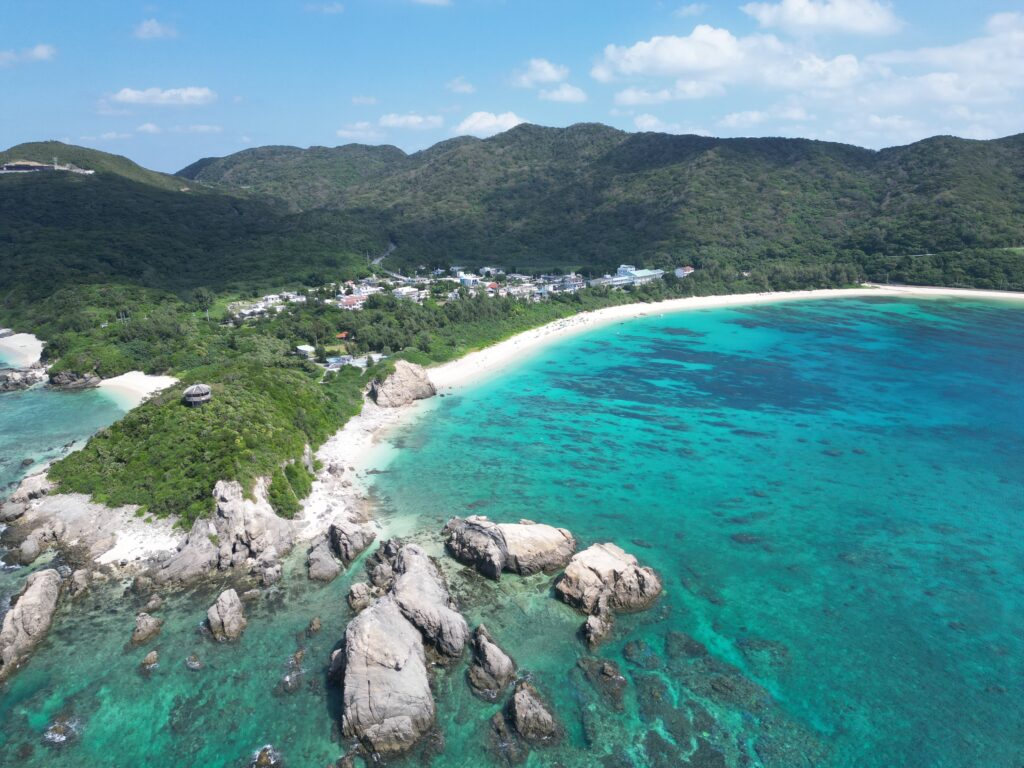
Aharen Beach is the most popular beach on Tokashiki Island. Known for its clear turquoise waters and soft white sand, it’s a great spot for swimming, snorkeling, and relaxing. Most of the beaches on the Kerama Islands have designated swimming areas. It’s a safety precaution they enforce on many beaches. At Aharen Beach, it was not enforced. There is a jellyfish net protecting the roped-off area. Jellyfish are, apparently, a serious danger in Okinawa. It wasn’t jellyfish season when we visited and we didn’t have any issues.
Most beachgoers crowd around the entrance to the beach. The surrounding area has small restaurants and rental shops offering beach gear, including umbrellas, snorkels, and kayaks. The nearby cliffs and lush green hills add to the scenery, making for a picturesque location. There is a large boulder protruding from the sand. We found a kind of goby fish that lived in the cracks of the rocks and seemed to do just fine walking around on its fins above water. The call of cicadas hidden in the trees was loud and unceasing. You can hike to a lookout pavilion perched on the hill above the beach. To me, Aharen Beach was a magical place.
In the drone photos above, you can see a coral reef extending from the small, rocky peninsula. If you look closely, you can even see the blueish color of some of the coral from a couple of hundred feet in the air – the water was that clear. There was no one in this area, but I’m a confident swimmer and I’ve done my fair share of solo snorkeling, so I swam out to the reef by myself. I brought my mask and snorkel with me and decided not to pay to rent fins.
The reef was beautiful! Indonesia’s reefs are still undefeated, but the Kerama Islands reefs are a close second. I saw a few new species of reef fish I had never seen before. I stayed out in the water snorkeling for a long while, but I knew Indi would worry if I was away for too long. So, I reluctantly swam back to shore. Luckily, I would find excellent snorkeling on all three islands.
We stayed at Kerama Backpackers on Tokashiki Island. This was our first experience staying at a “guesthouse” in Japan. We loved it! I wish we could have stayed longer. We took the last room available: the traditional Japanese room. That meant that we slept on Japanese futons. Not all futons are created equal but they are generally less comfortable than the mattresses you are probably used to. I thought it was a fun experience but wouldn’t have minded a thicker futon…
Upon seeing the tatami mats and breathing in their hay-like aroma, Indi was overwhelmed by the Spirit of Japan and began a sumo wrestling exercise.

We had sushi for dinner at one of the few restaurants on the island. We figured that an island would have the best fish, but that wasn’t the case. The fish wasn’t awful, but we didn’t love it.
Day 4 - Tokashiki/Zamami Island
- Scuba Diving
- Aharen Beach
Scuba Diving
We checked out of the guesthouse in the morning and walked over to a scuba diving shop in town. I believe it is run by the owners of another guesthouse. We got fitted for gear, left our things in their building, got in their van, and drove to the other side of the beach. We helped load the boat at the Aharen Port. It was my first time using the smaller, heavier oxygen tanks.
The boat ride to each location was pretty short. My last dive was at The Gili Islands in Indonesia. My mask performed much better this time, burning off the plastic film from the inside of the glass made a huge difference. Unfortunately, the water proof housing around my GoPro started fogging up so a lot of my footage isn’t great.
Our first dive location was mostly through sandy shallows. It was pleasant enough but mostly featureless. It was a good warm-up dive for Indi who had not been in over a year. There was a small coral island in the middle of the sand that was covered in fish. I’m not sure, but one of the most prevalent fish species may have been the Ryukyu Sweeper. I also saw a fairly large school of Pike or Yellowtail Barracuda.
After our first dive, we returned to shore. I believe we only carried enough tanks to do one dive, so they needed to be swapped out. There was a short wait at the dock, I took the time to find a vending machine and let my GoPro housing dry out. It wasn’t long before we piled back in the boat and sailed to our second dive site.
The second dive site was much cooler than the first. It was principally a cave dive. We went down to depth (maybe 40 feet), then swam through a kind of crevice. The crevice descended deeper, took a sharp left turn, then turned into an enclosed tunnel. It was very dark inside. The dive guide had his flashlight on, and there was some light shining from a crack above us. There were a few pretty magenta fishes, but there wasn’t a whole lot to see in this area. The cool factor was there for me, though. This may have been the most fun I have had diving. We exited the tunnel after some photos and then came across a strange sea creature: the red electric clam.
The Red Electric Clam is found in the warm Indo-Pacific waters. Known for its bright red or orange mantle, it has a symbiotic relationship with algae that gives it a glowing appearance. Two lines within the clam appear to flash on and off like the filaments within a lightbulb. Their striking color serves as a warning to predators, as they contain a mild toxin.
We ascended, took the boat back to the port, and got our bags. We hung out on Aharen Beach until our ferry arrived and departed from the same port we’d used for scuba.
We took the small ferry over to Zamami Island. The island was possibly even more beautiful than Tokashiki! We took out money from a strange ATM that looked like a copy machine. While walking, we noticed that each island has unique manhole covers. Zamami Islands is known for whale watching, so the metal lid had a depiction of a whale breaching.
We watched the sun set over Aka Island next to the statue of Marilyn. Shiro was a dog from Aka Island who regularly swam over a mile across the sea to visit Marilyn on Zamami Island in the 1980s. Their story gained national attention in Japan, and after Marilyn passed away, a statue was built in her honor on Zamami. Shiro later became famous and was featured in a TV program. His statue was later placed on Aka Island, facing Zamami.
Day 5 - Zamami/Aka Island
- Ama Beach
- Furuzamami Beach
Ama Beach

In the morning, we rode our bikes to the closest beach – Ama Beach. Ama Beach has a mostly rocky shoreline, with little natural shade, making it less ideal for lounging without an umbrella. From the beach, you can see the uninhabited islands of Gahi and Agenashiku, as well as the larger Amuro Island just offshore. If you had a kayak or paddleboard, you could easily get to one of these small islands. At low tide, exposed rocks and tide pools appear along the shore. Sea turtles are often spotted grazing in the shallows, especially in the early morning or late afternoon. Indi snorkeled for a while but I hung out in the shallows. We didn’t stay too long at this beach because I knew that the main attraction on Zamami Island is Furuzamami Beach.
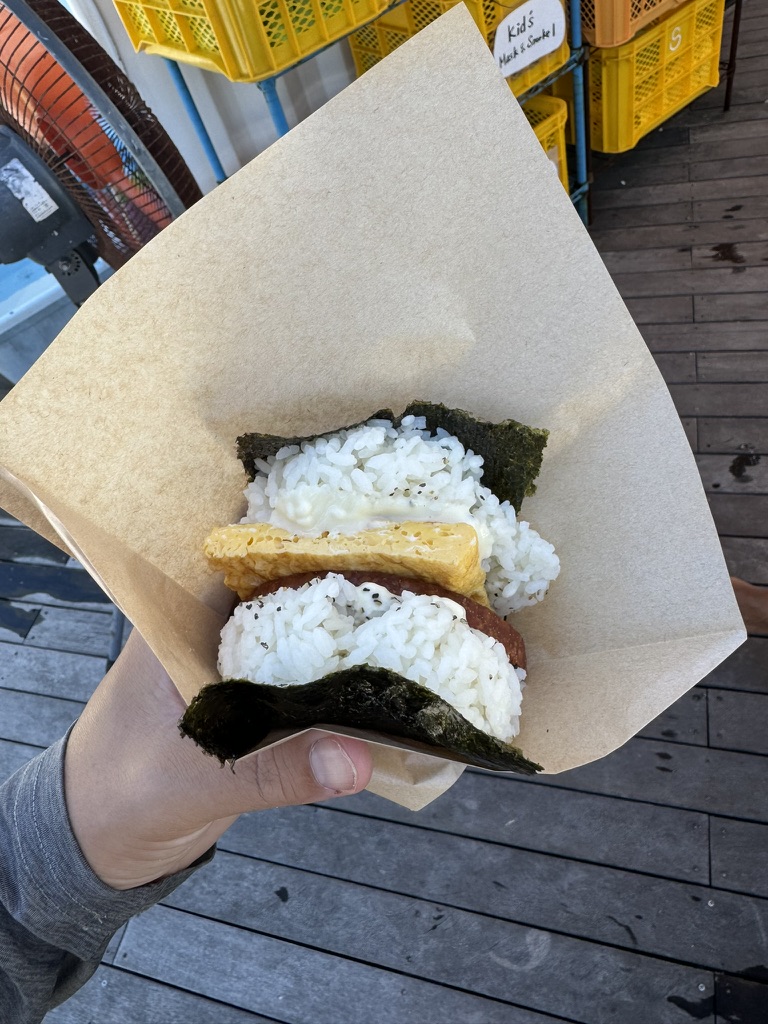
After the beach, we ate one of the best onigiris of our trip from a shack a short distance from the ocean. We got breakfast onigiris with spam, egg, mayo, and black pepper. Delicioso.
Furuzamami Beach
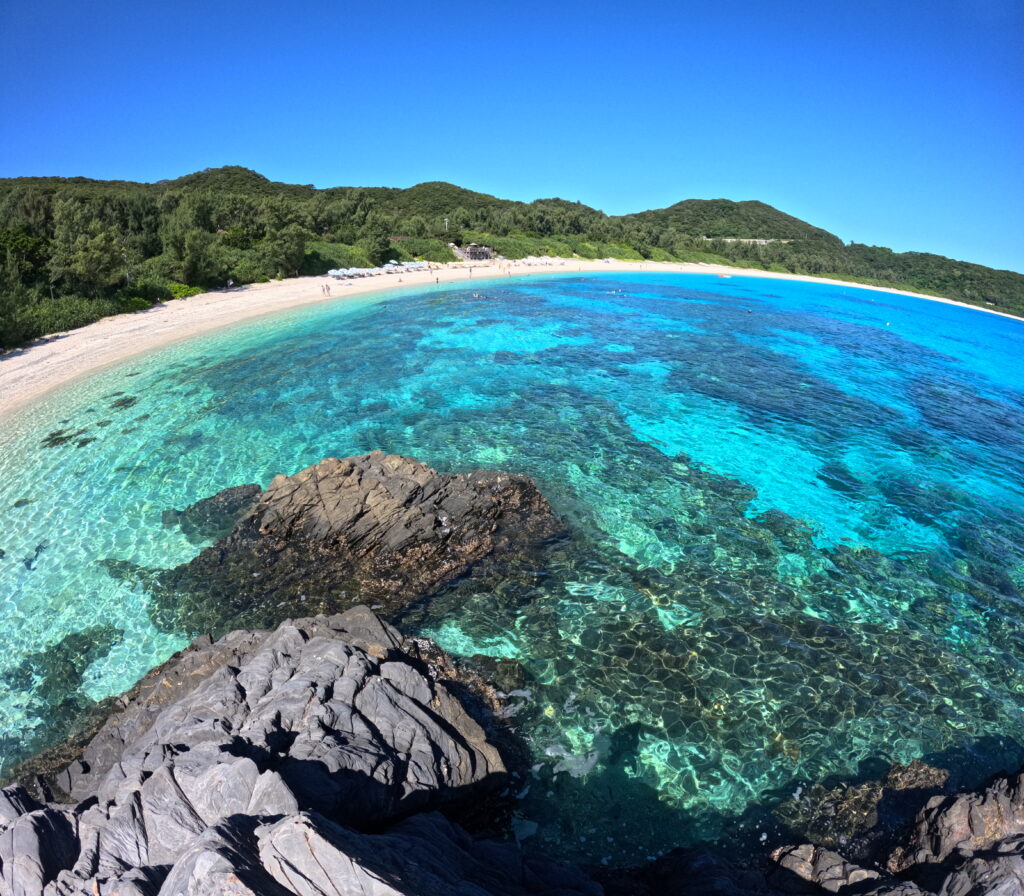
Furuzamami Beach has clear, shallow waters and white coral sand. I was shocked by the multi-colored Kerama blue water. All of these photos are unedited. They can’t capture the vivid, electric color of the shifting water, but even so, the color is incredible. I need to compile an official list, but I am all but certain that Furuzamami Beach ranks in my top 10 beaches list. The shoreline is lined with scattered coral fragments, so bring footwear for walking on the beach.
The beach has rental shops offering snorkel gear, umbrellas, and lounge chairs, as well as a small café nearby. We rode our bikes to the beach and the ride had some significant ups and downs. I would do it again on a bike, but a bike with more gears would be ideal. There were parts of the road that were so steep that I needed to hop off the bike. Furuzamami has designated swimming areas and lifeguards during peak season.
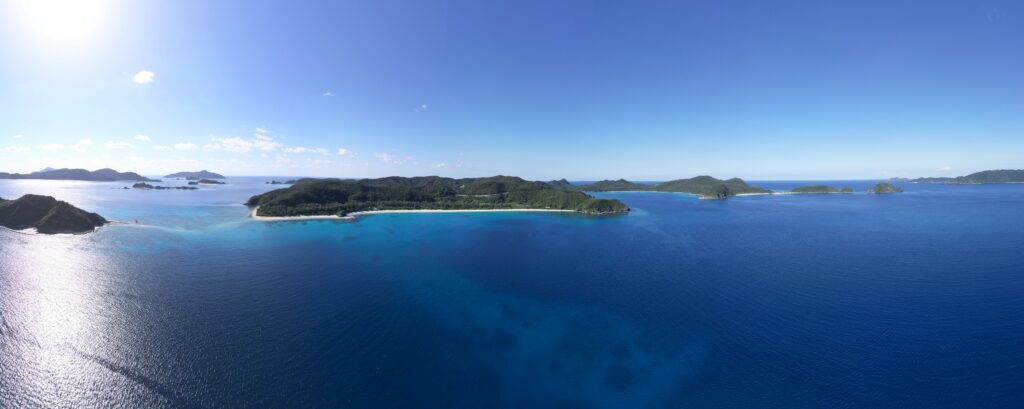
The snorkeling was excellent. There was a shallow reef not far from the shore. It’s a great reef for beginner snorkelers. There are myriad reef fish species living around the coral. I saw colorful parrotfish, territorial clownfish, and a lot more fish whose names I have yet to learn. The water was so clear that it felt like swimming in a pool.
Amuro Island
I flew my drone to Amuro Island and it made me wish I had rented a kayak. I saw long, empty white sand beaches.
We spent the rest of our time enjoying the beach. Eventually, we had to return to town. We returned our bikes and got some snacks. Indi was obsessed with a grape-flavored ice cream snack. They were purple or green frozen balls, depending on the grape flavor. We grabbed some laundry we had hung up to dry outside of the guesthouse, threw it in our bags, and got a ride from our guesthouse back to the port. From there, we took the small ferry to Aka Island.
We had heard that there were deer on Aka Island. That’s an understatement, from the moment we stepped foot on the island we saw deer everywhere. We didn’t see many other tourists, and the locals seemed to be uninterested in the deer. We didn’t approach them, but in walking along the road we got fairly close and they seemed unafraid. When The Kerama Islands are busy with tourists I have a feeling the deer are swarmed by humans offering sugary foods.
We spent the last of the day’s light walking around the island. We watched the sun set on a beach full of deer. We later found a small restaurant that seemed to operate out of someone’s house. The food was good but I neglected to take photos.
Day 6 - Aka Island
- Xing Fu Tang
- Taipei 101
- The Red House
Geruma Island
zzzzIn the morning we got up and packed. We checked out and left our bags at the hotel. We walked to a bike rental place and took off on bikes to Geruma Island. The ride was fairly hot, especially because the bikes didn’t have gears and the road went up and down. At Geruma I helped a guy walk his kayak to the water, we walked up to a shrine, and then to an observation deck. We spotted very few other tourists along the way.
Aka Beach
We rode back to Aka Island and went to Aka Beach. Indi rented a snorkel and fins. We went snorkeling and I was surprised to find the reef much better than I had expected. Not sure why I had low expectations but it was great, though damaged. I didn’t want to leave because I was convinced we were going to find better snorkeling on the island and thought that Aka’s pretty beach would not be as good as Zamami’s. I was wrong.
Nishibama Beach
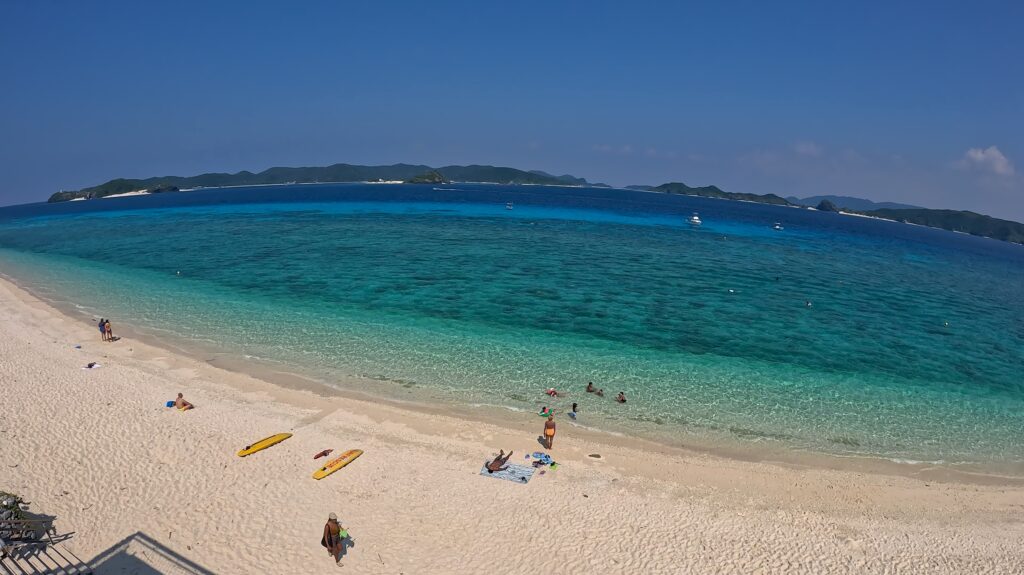
We rode our bikes to the east side of the island and stopped for lunch before hitting the beach. I tried Okinawa’s well-known taco rice for the first time—it was better than I expected but nothing mind-blowing. From there, we went to Nishibama Beach, which completely blew me away. The beach is a long stretch of soft white sand, with clear Kerama blue water and a vivid coral reef just offshore. It’s postcard-perfect and easily one of the most beautiful beaches I’ve ever visited.
We set up near the shade of the small cliffs on the south side and took in the view. One thing to note is that the swimming area is strictly controlled. Unlike Aharen Beach, where the rules are looser, here the lifeguards will call you back in if you cross the roped-off boundaries. I flew the drone for a bit to take some photos of this spectacular beach and the reef beyond it. After that, we snorkeled for a long time—visibility was excellent, and there were lots of fish. I saw a porcupine fish, a banded sea krait, an eel, and a massive parrotfish.
We lost track of time and stayed in the water until we both realized we weren’t sure how long we had before the return ferry. Since we still had a little time, we just sat waist-deep in the water and talked, watching the afternoon sun reflect off the ocean. It felt like a soft goodbye to our beach life. We knew our island life chapter was ending after moving from Puerto Rico, and we ended it on a high note. Nishibama Beach is hands-down one of my favorite beaches I’ve ever visited.
We got back on the bikes and peddled back fast because we had let the time get away from us and the bike rentals were due in 3 minutes. The ride was scenic and fragrant from the smell of roadside flowering plants. I made it back 5 minutes late but the lady didn’t mind. Indi dropped off her snorkeling stuff and arrived shortly after. We returned to the hotel, showered, and our host dropped us off at the ferry. I loved staying at all three guesthouses, although the beds leave much to be desired.
The ferry to Naha departed at 4:00 pm. It stopped at the other islands before returning to Okinawa. We meandered towards the train station, which took us to the airport. Our flight departed Okinawa at 8:05 p.m.
Next time
On our next adventure, we have our craziest travel experience finding a place to sleep in Osaka.
